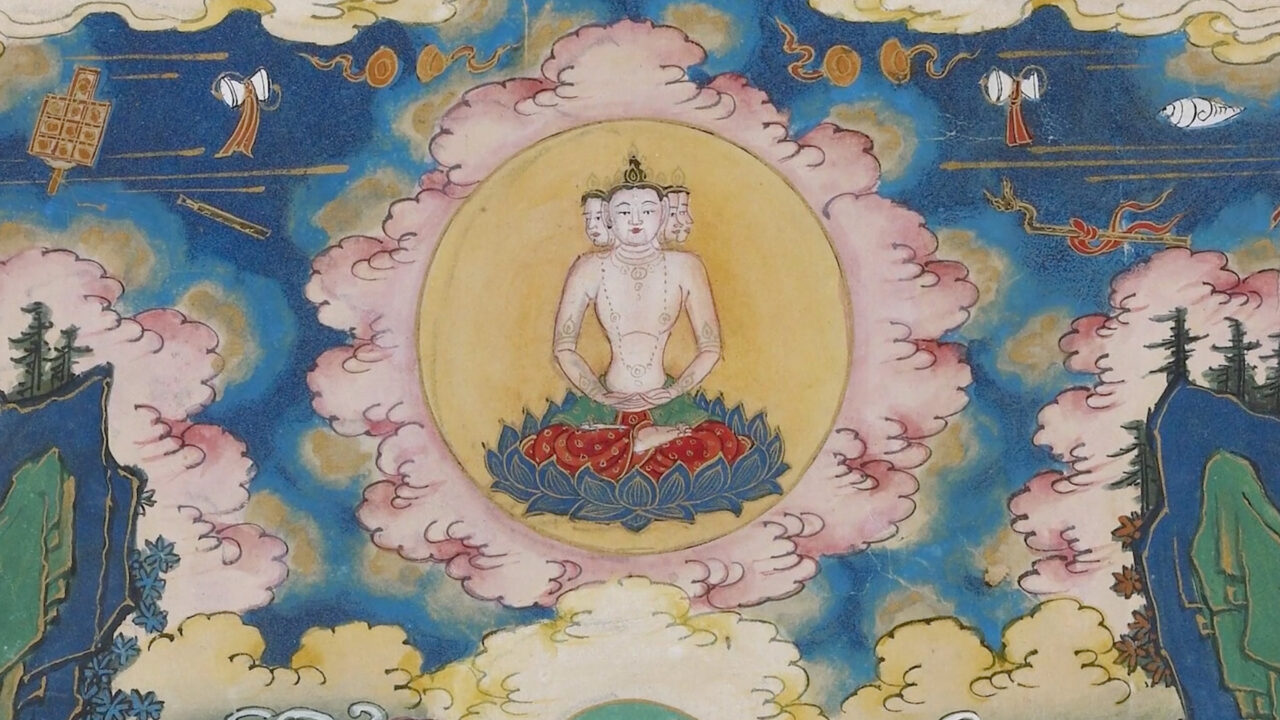
Art isn’t always just an aesthetic expression—it is often created and commissioned for specific purposes in cultural and religious practices.

Art making in the greater Himalayan region is essentially religious in nature, and based on the values, concepts, and stories of Buddhism, Hinduism, and Bon.
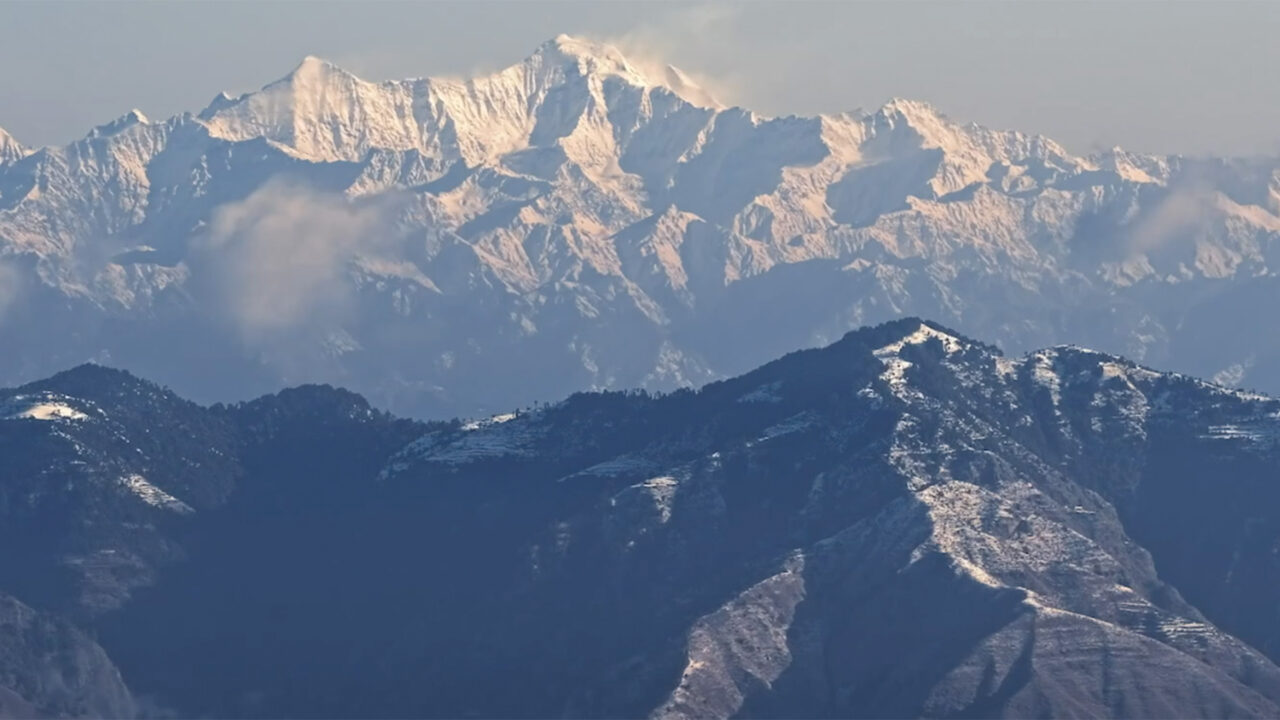
People’s lives intersect at an extraordinary range of places in the greater Himalayan region—from misty valleys to snow-capped mountains.
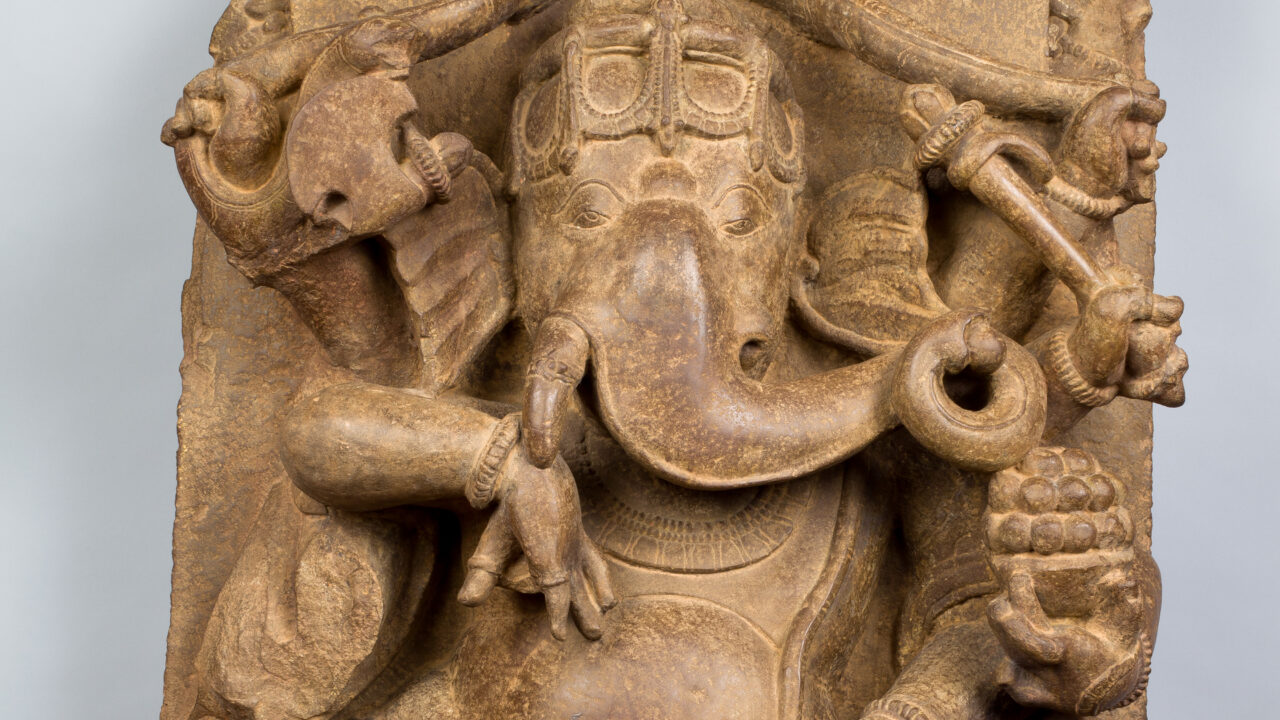
Art and cultures are often deeply entwined with religion.
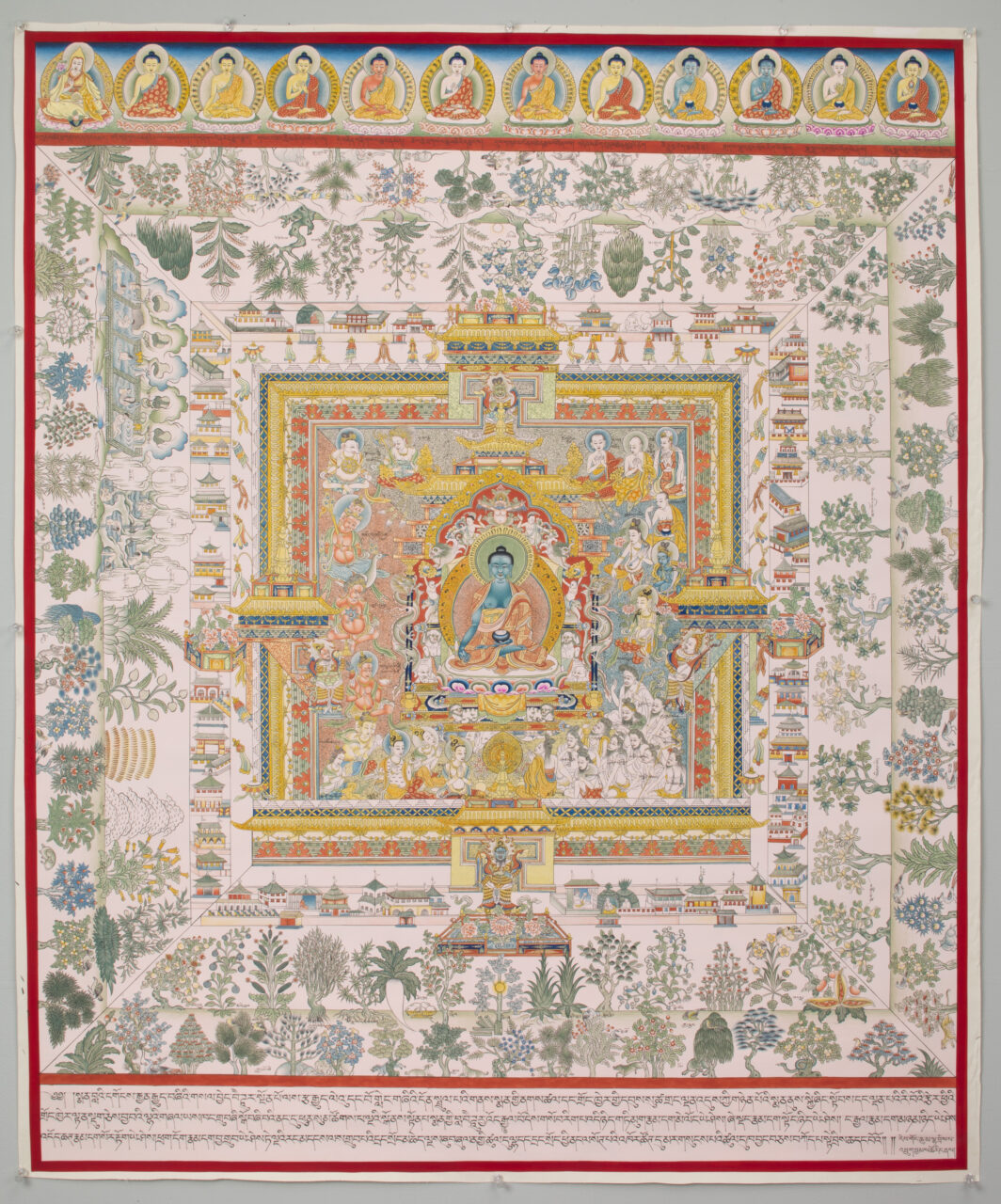
This painting depicts a specific event: the Medicine Buddha, seated in the center of his mandala palace, explaining the science of healing to four groups of disciples—gods, saints, Buddhists, and non-Buddhists.
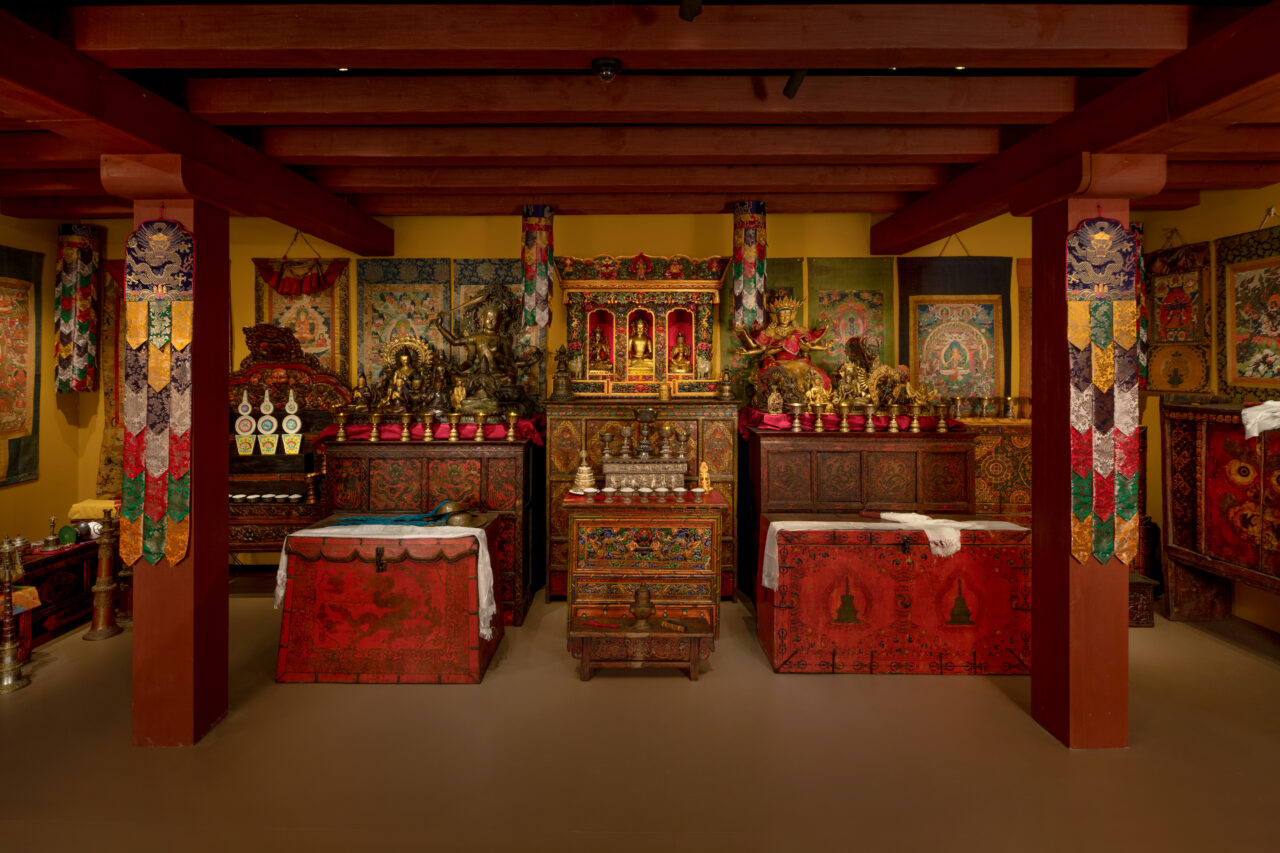
The Rubin Museum Tibetan Buddhist Shrine Room presents more than 100 artworks and ritual objects as they would be displayed in an elaborate Tibetan Buddhist household shrine—a space used for devotional prayer, offerings, and rituals.
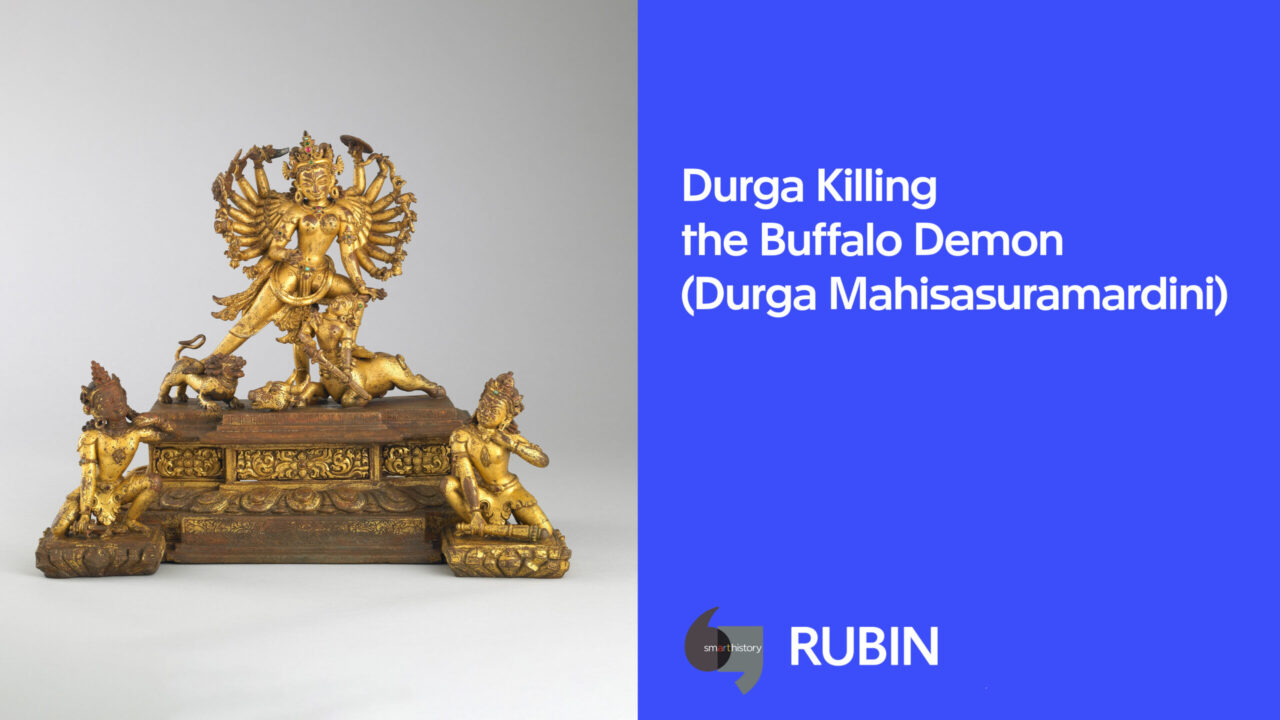
Dr. Elena Pakhoutova and Dr. Beth Harris illuminate the story of the goddess Durga killing the demigod Mahisha.
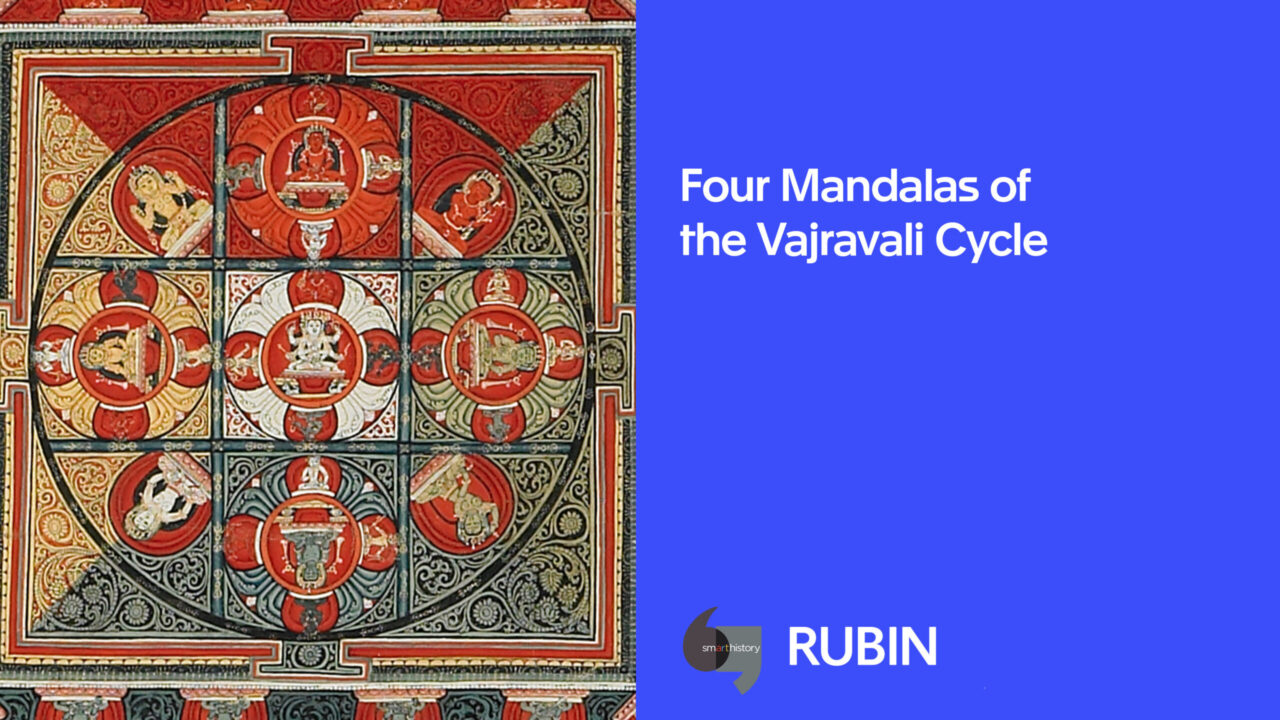
Dr. Karl Debreczeny and Dr. Steven Zucker delve into one of the most important paintings in the Rubin’s collection—Four Mandalas of the Vajravali Cycle.
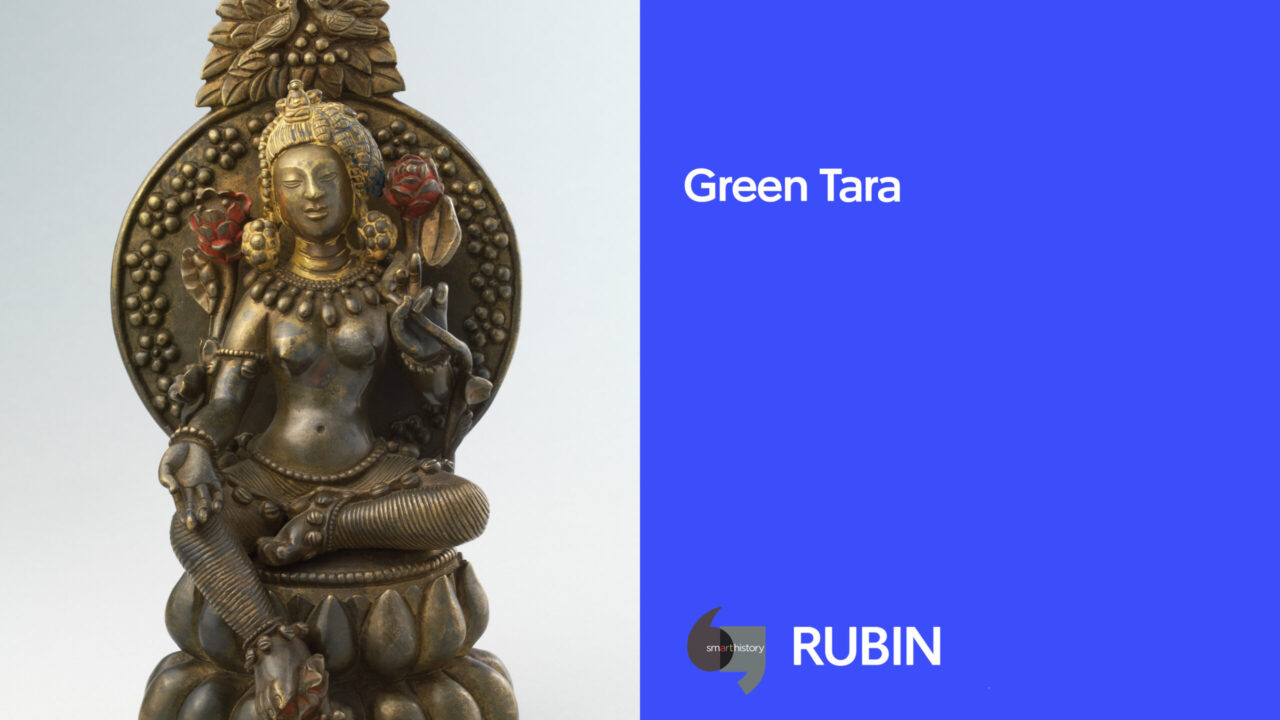
Dr. Karl Debreczeny and Dr. Beth Harris examine an exquisite sculpture of one of the many emanations of the revered goddess.
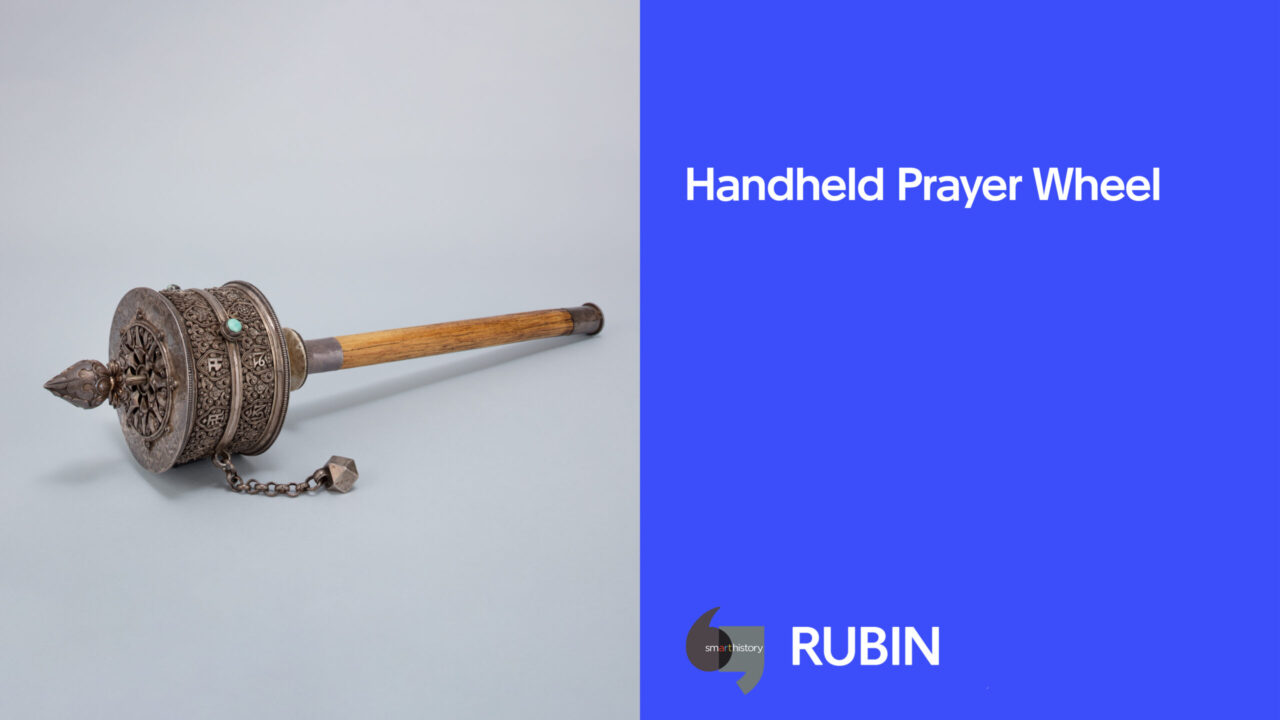
Dr. Elena Pakhoutova and Dr. Steven Zucker take a look at an ornate handheld prayer wheel, a ritual object that is ubiquitous in Tibetan Buddhist culture.
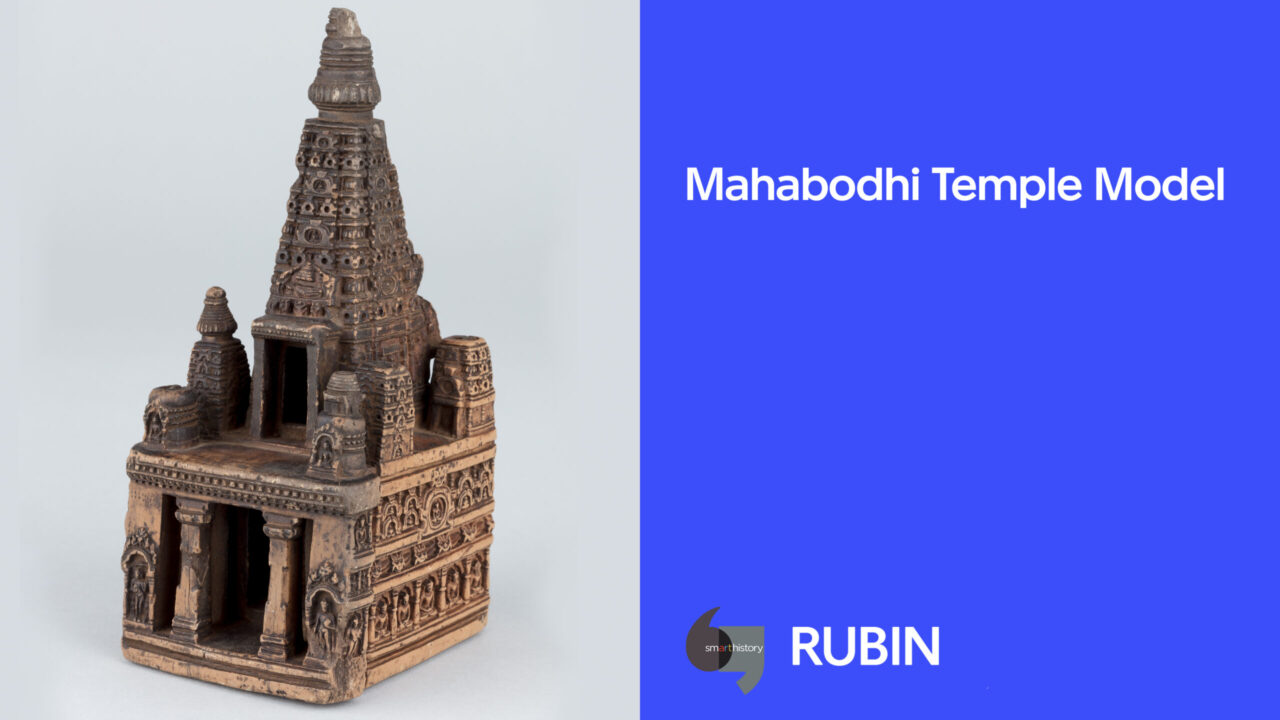
Dr. Elena Pakhoutova and Dr. Beth Harris explore a model of the most important temple in the Buddhist world.
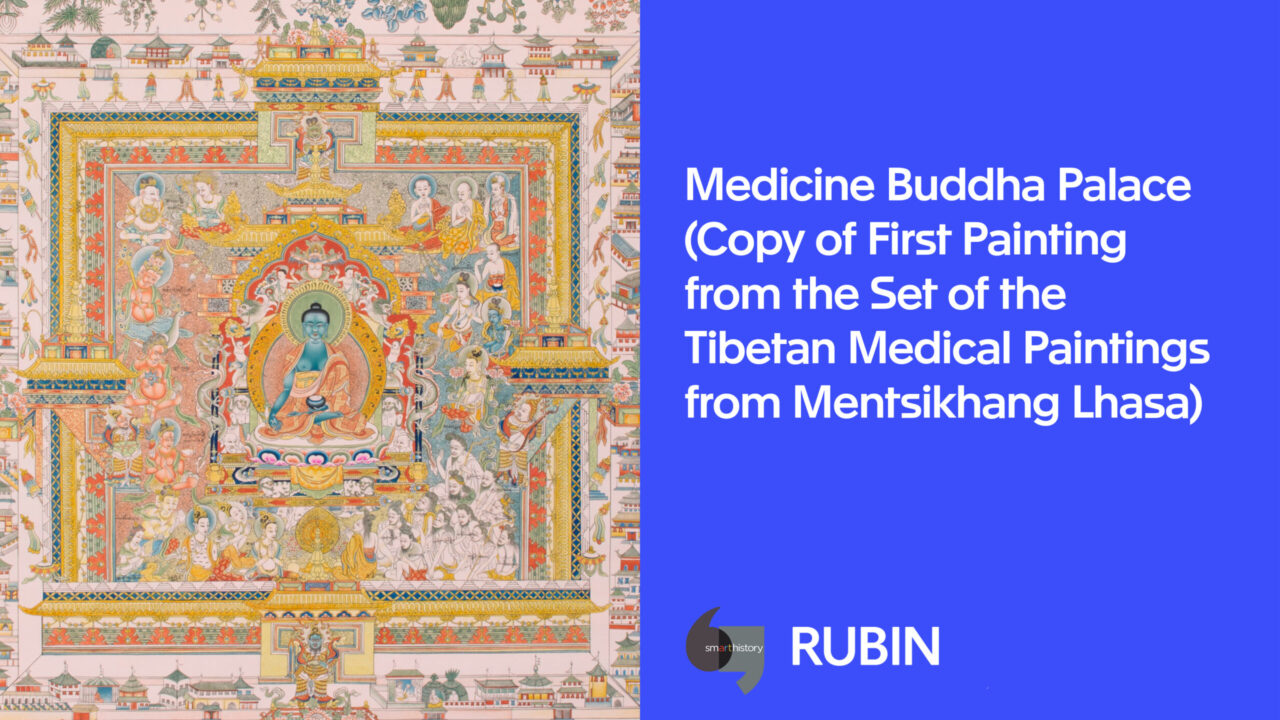
Dr. Elena Pakhoutova and Dr. Beth Harris delve into a painting of the Medicine Buddha.
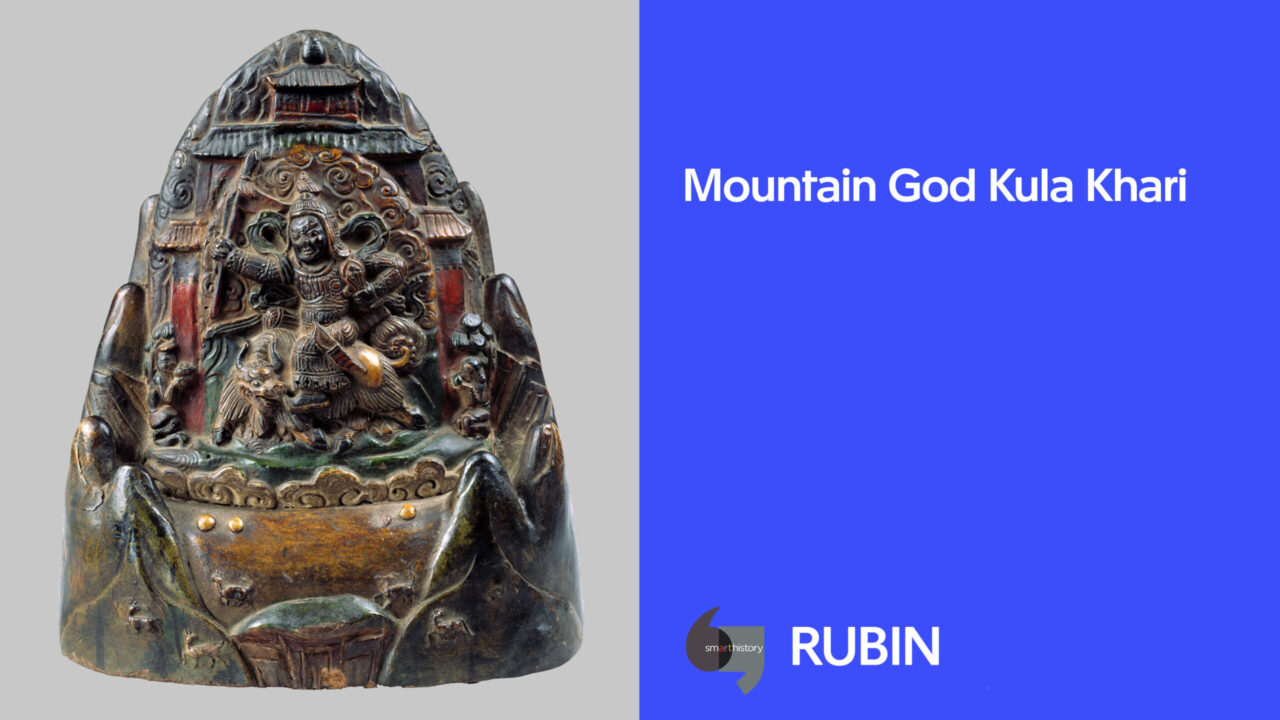
Dr. Karl Debreczeny and Dr. Beth Harris introduce us to the fierce Mountain God Kula Khari.
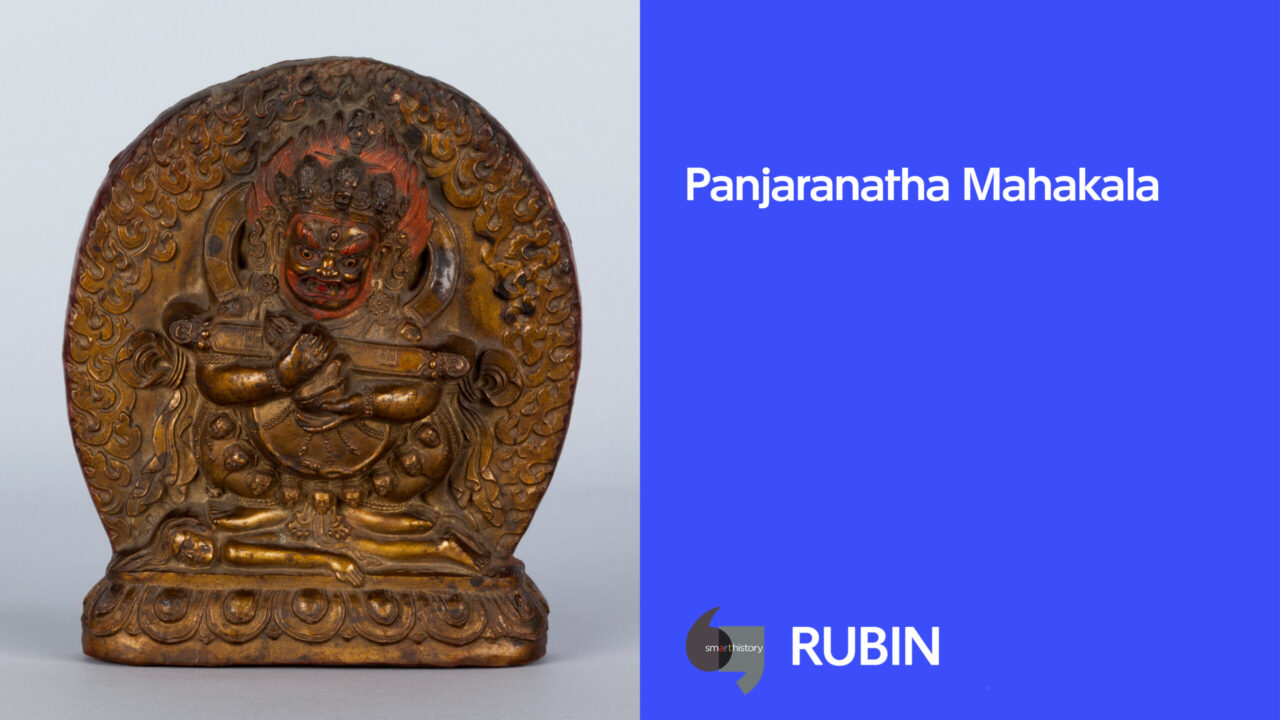
Dr. Karl Debreczeny and Dr. Beth Harris examine a sculpture of Mahakala, one of the eight great wrathful dharma protectors in Vajrayana Buddhism
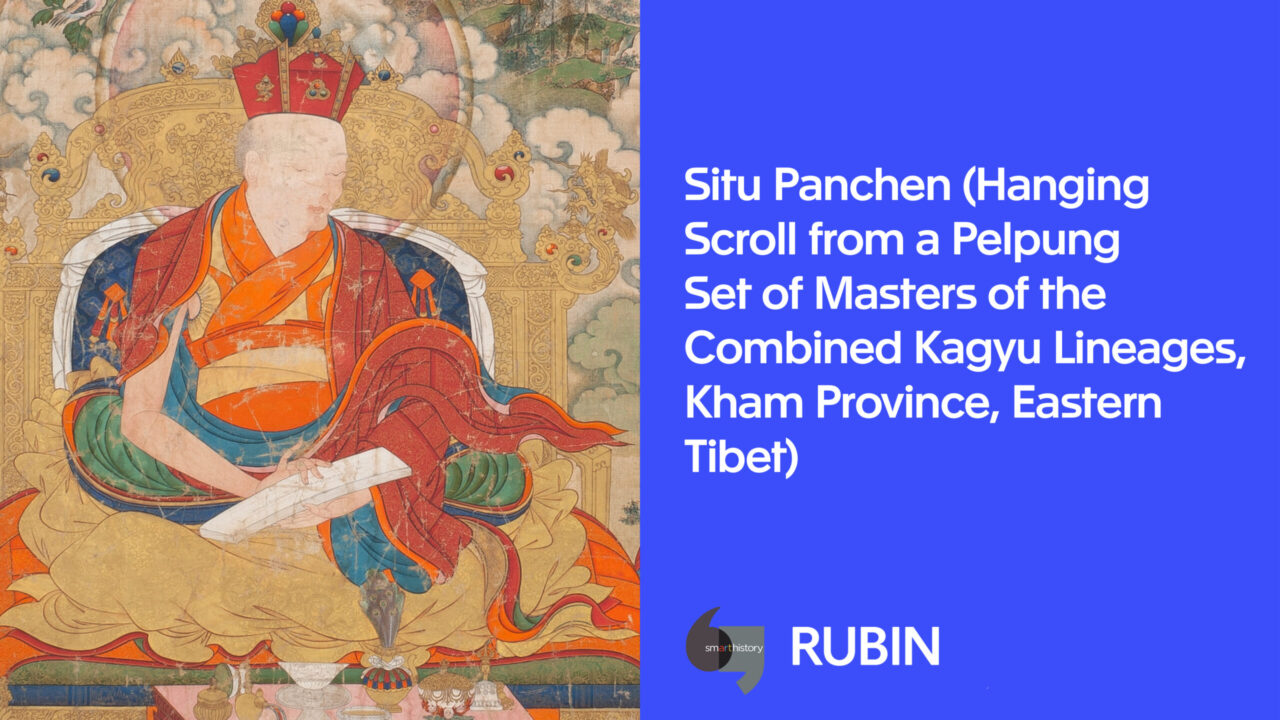
Rubin Museum senior curator Dr. Karl Debreczeny and Smarthistory’s Dr. Steven Zucker look at a painting of one of the great scholars and polymaths of the 18th century, Situ Panchen.
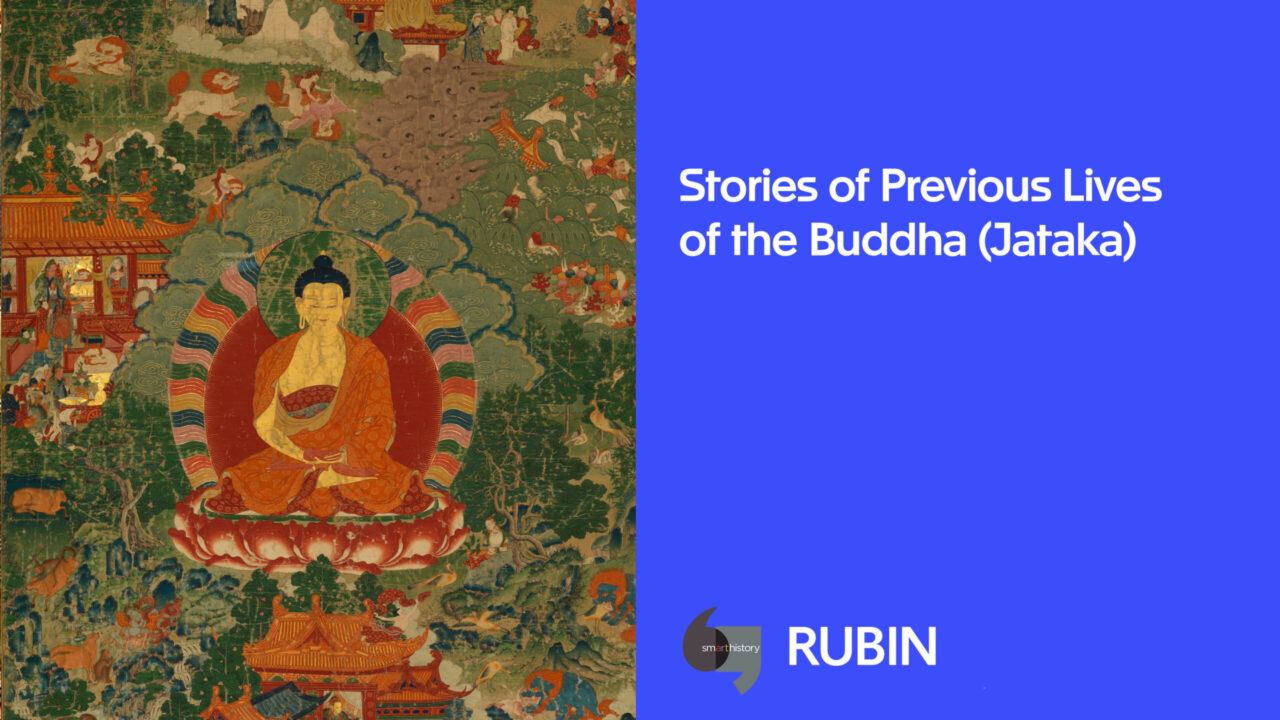
Dr. Elena Pakhoutova and Dr. Beth Harris look at a thangka painting that illuminates the previous lives of the Buddha.
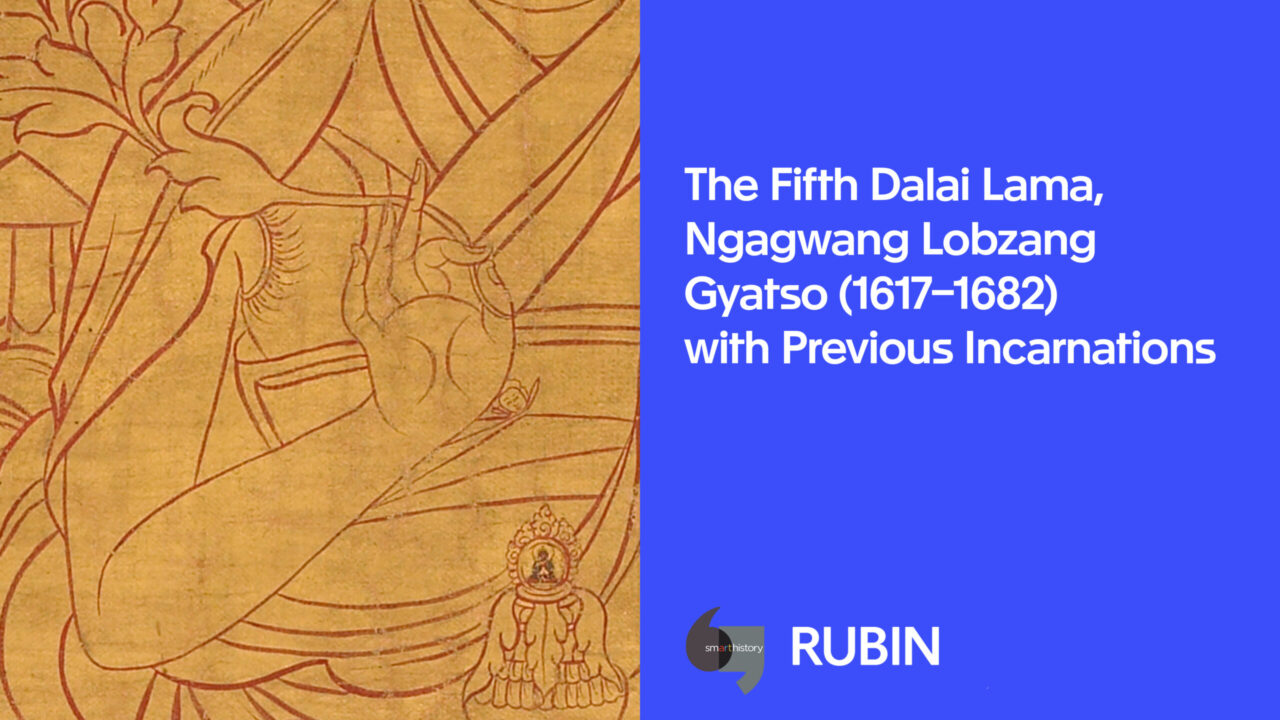
Dr. Karl Debreczeny and Dr. Beth Harris explore a painting of the Fifth Dalai Lama.
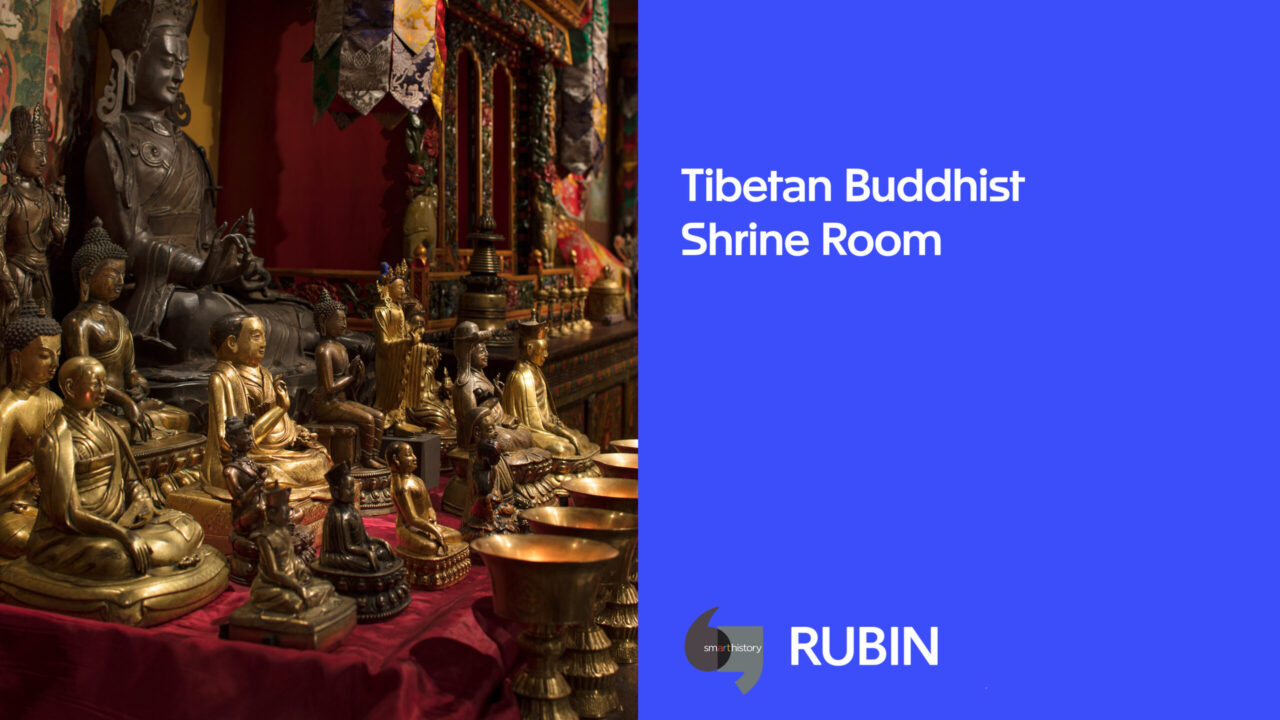
Dr. Elena Pakhoutova and Dr. Steven Zucker explore this treasure of the Rubin that displays art and ritual objects.
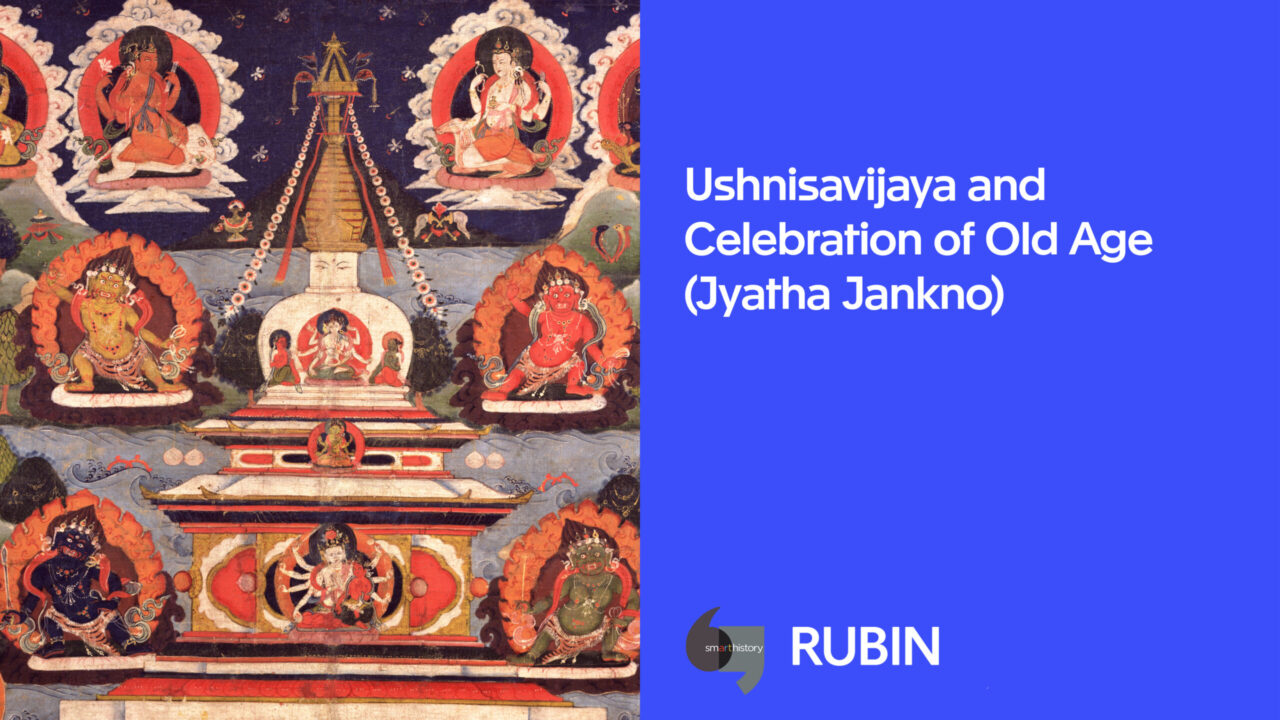
Dr. Elena Pakhoutova and Dr. Steven Zucker examine a painting that celebrates rituals for elders who reach the age of 77 years, 7 months, and 7 weeks.
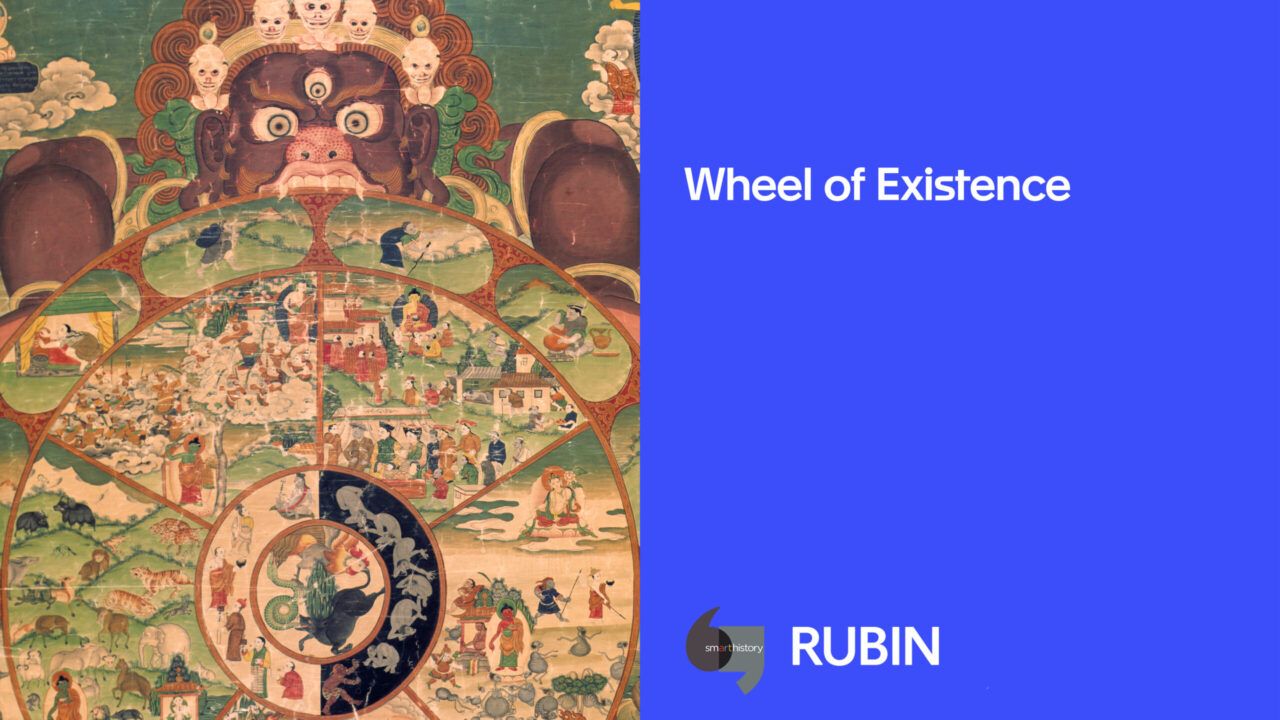
Dr. Elena Pakhoutova and Dr. Beth Harris reflect on a thangka painting of the Wheel of Life, also known as the Wheel of Existence.

A thangka is a Tibetan hanging scroll, usually painted on cotton, and then placed in a silk brocade mount.
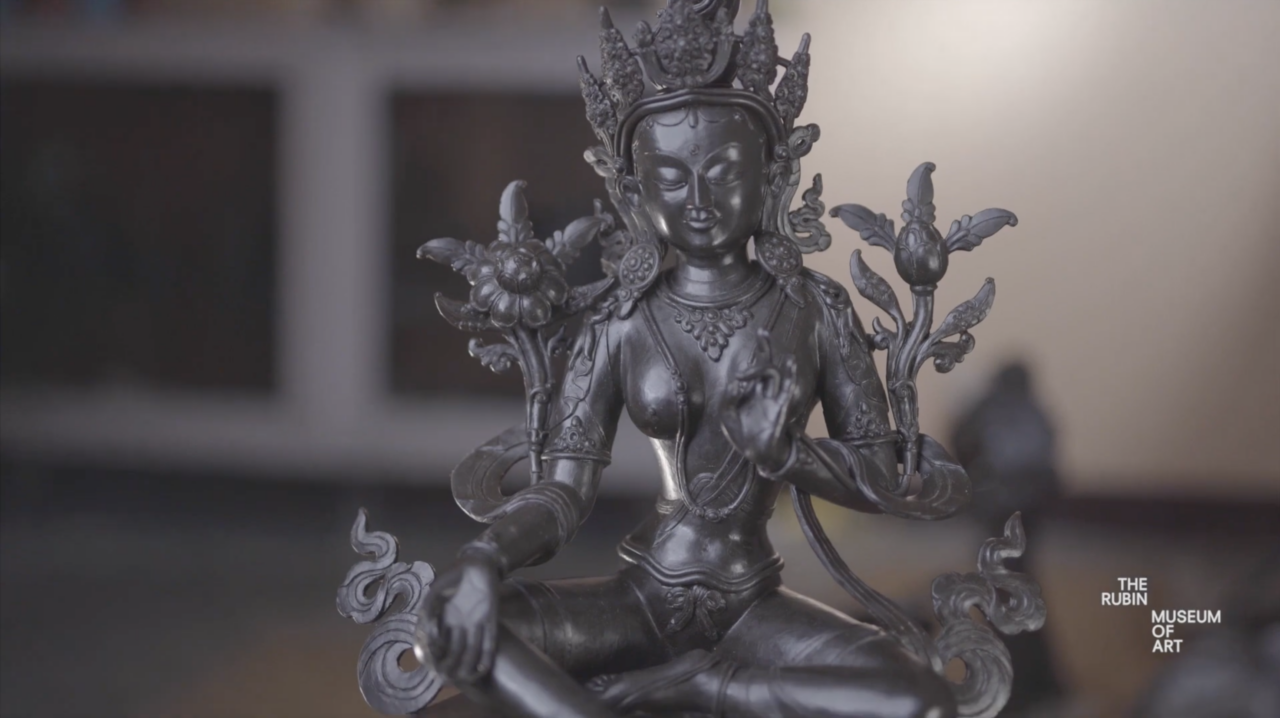
The lost-wax technique of hollow metal casting, perfected by Newar artists of the Kathmandu Valley, has remained a thriving practice from ancient times to the present day.

Mandalas can be painted, three-dimensional models, architectural structures, such as temples or stupas, or composed as arrangements of images within a temple.
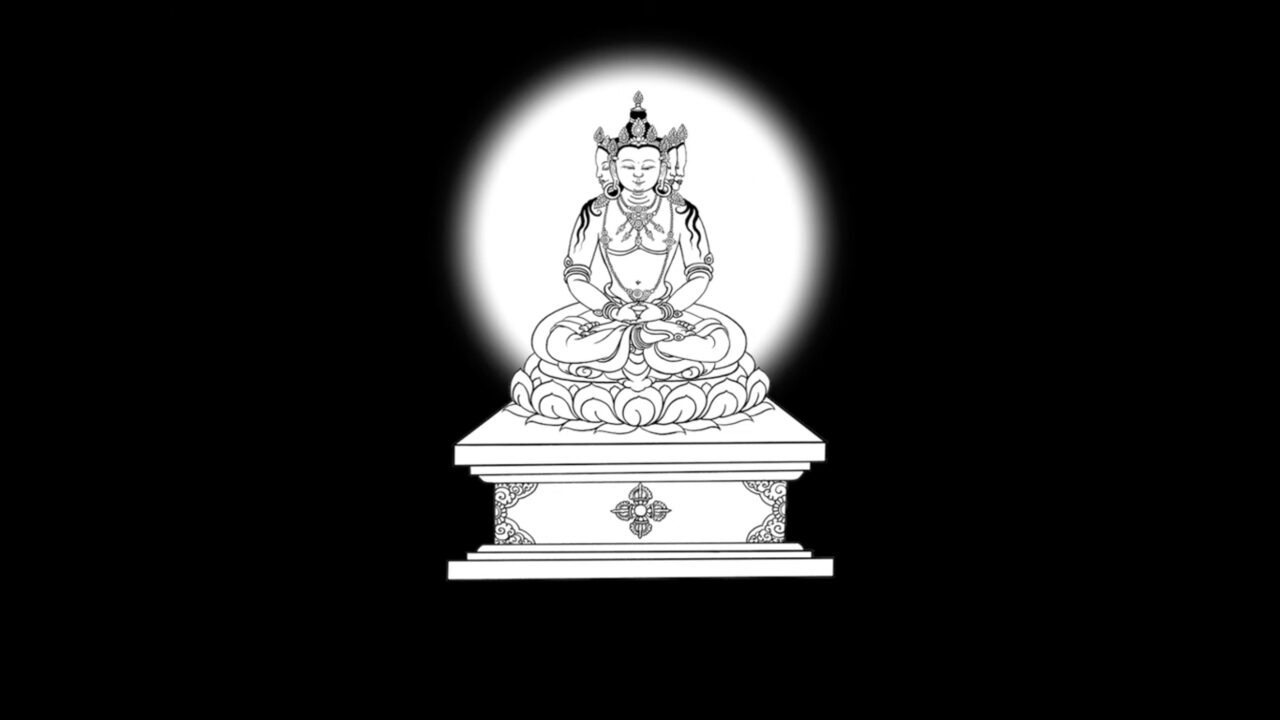
A visualization practice centered around the All-Knowing Buddha Vairochana
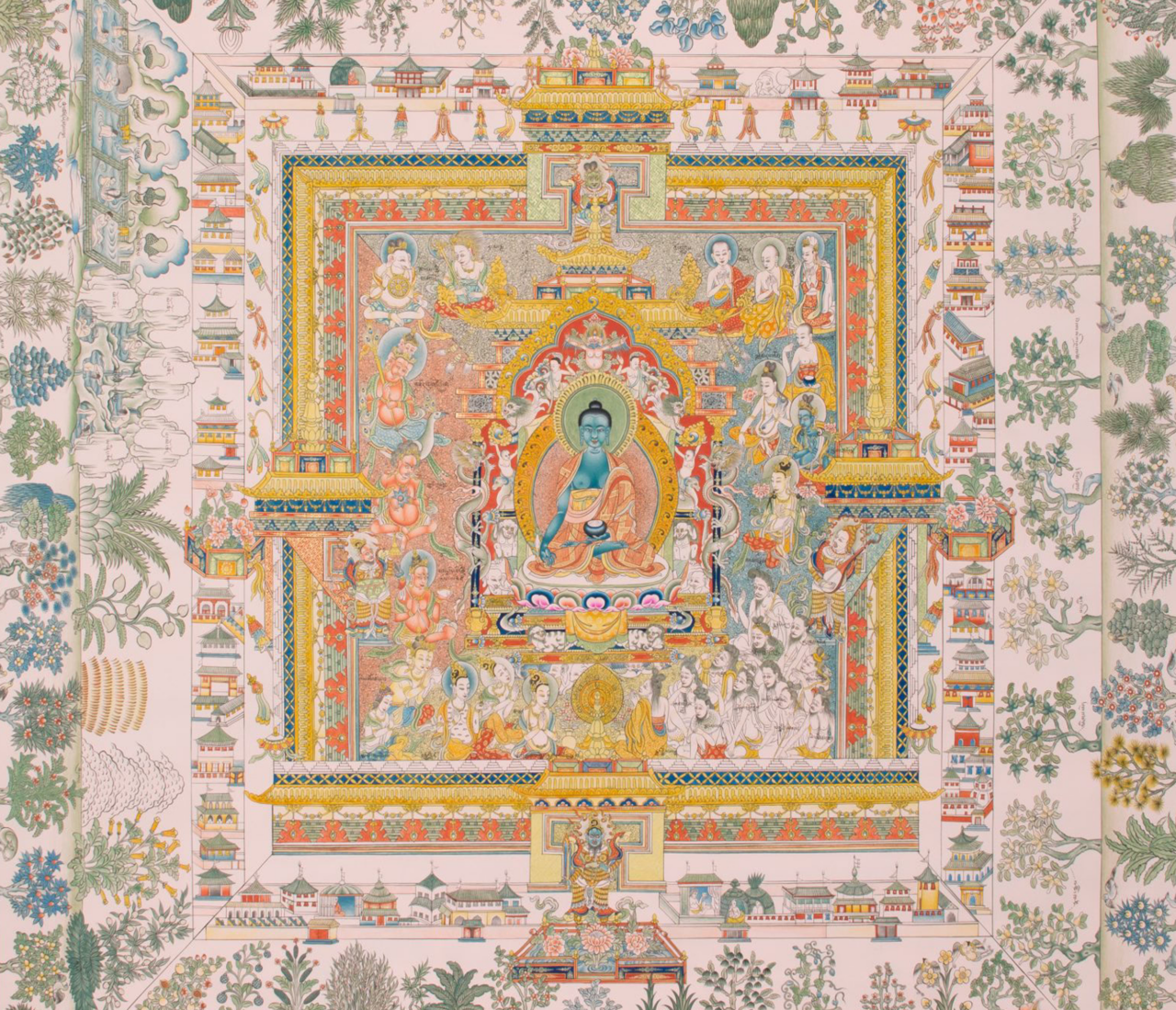
Dr. Kunga Wangdue explains the benefits of a holistic approach for healing the mind and body in Tibetan medical practice.
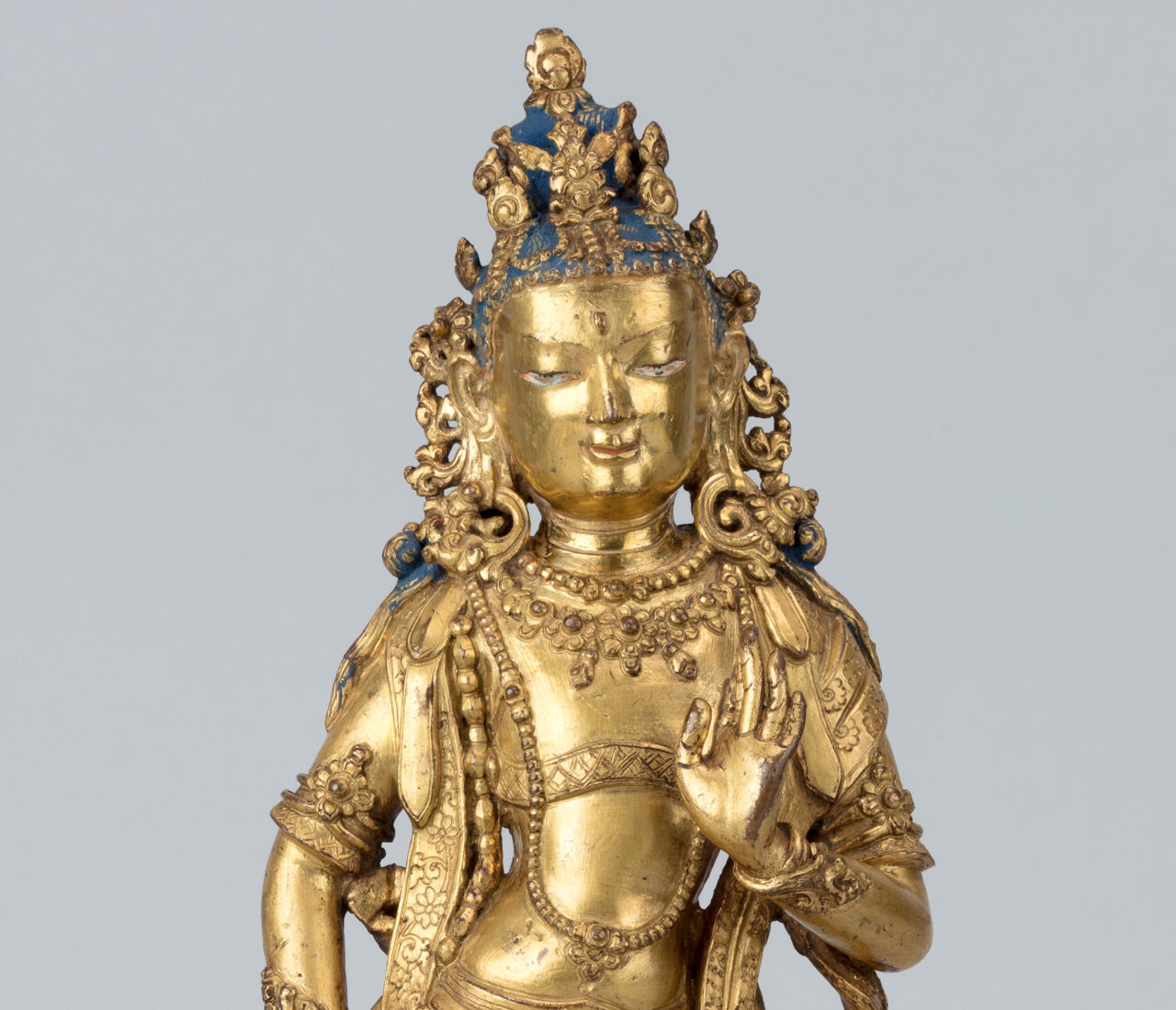
University student Ugen Yonten talks about receiving an initiation and blessings and his upbringing in Bhutan.
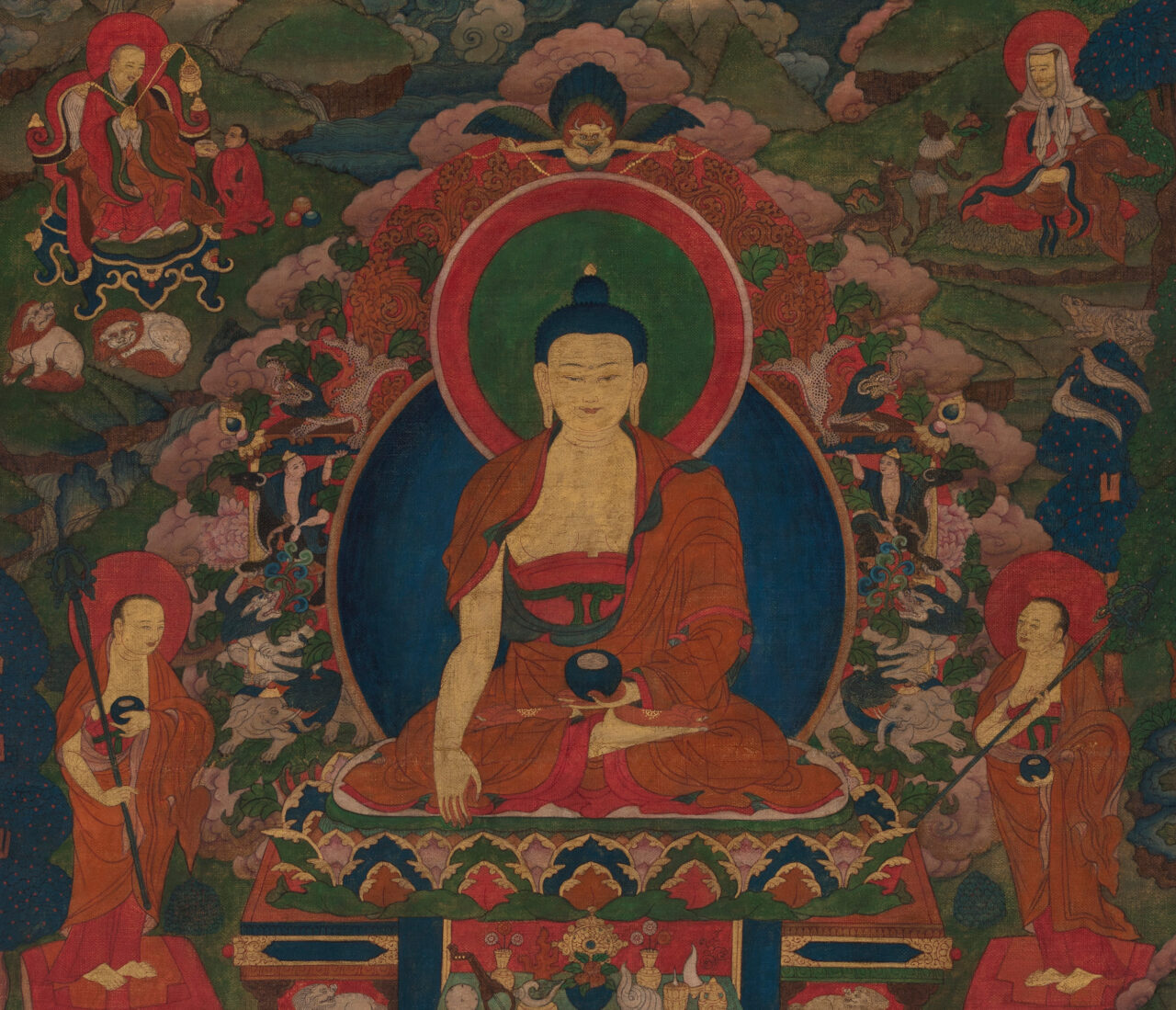
Buddhist monk and teacher Khenpo Pema Wangdak explains Buddhist ideals and the concept of awakening.
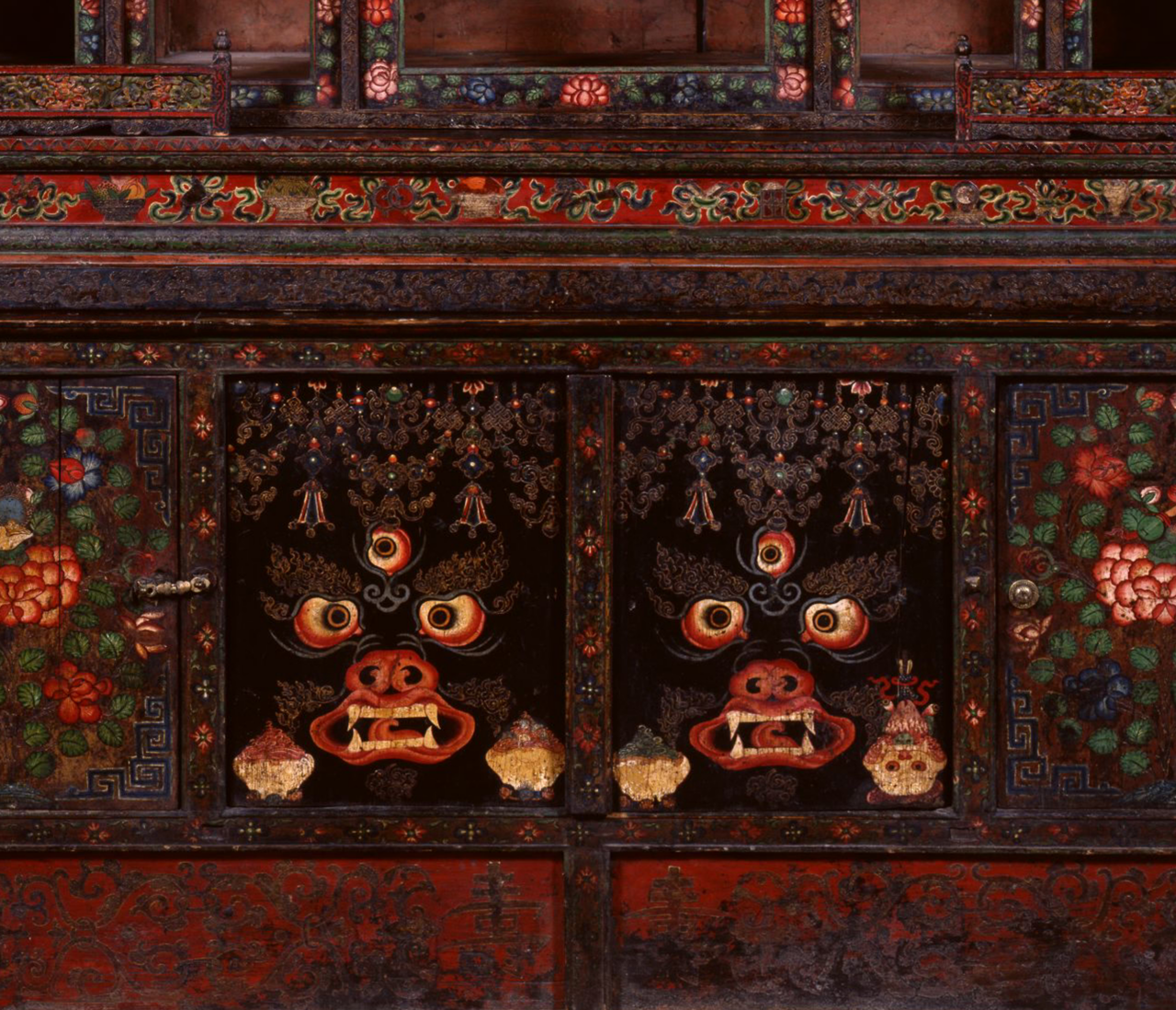
Scholar Gautama Vajracharya discusses Newar Buddhist household shrines and daily ritual practices in Nepal.
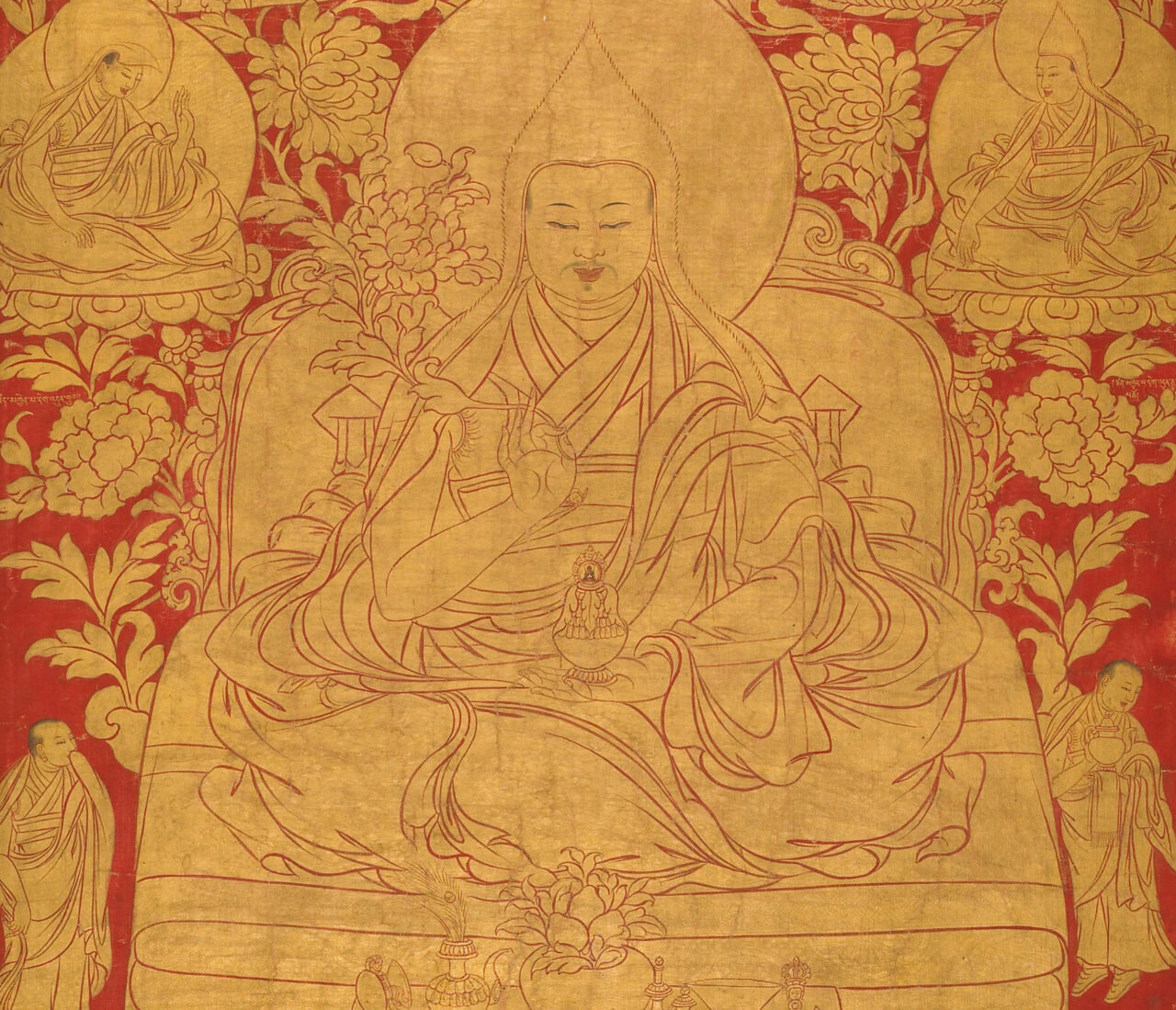
Buddhist nun Amy Miller talks about her teacher and inspiration for becoming ordained.
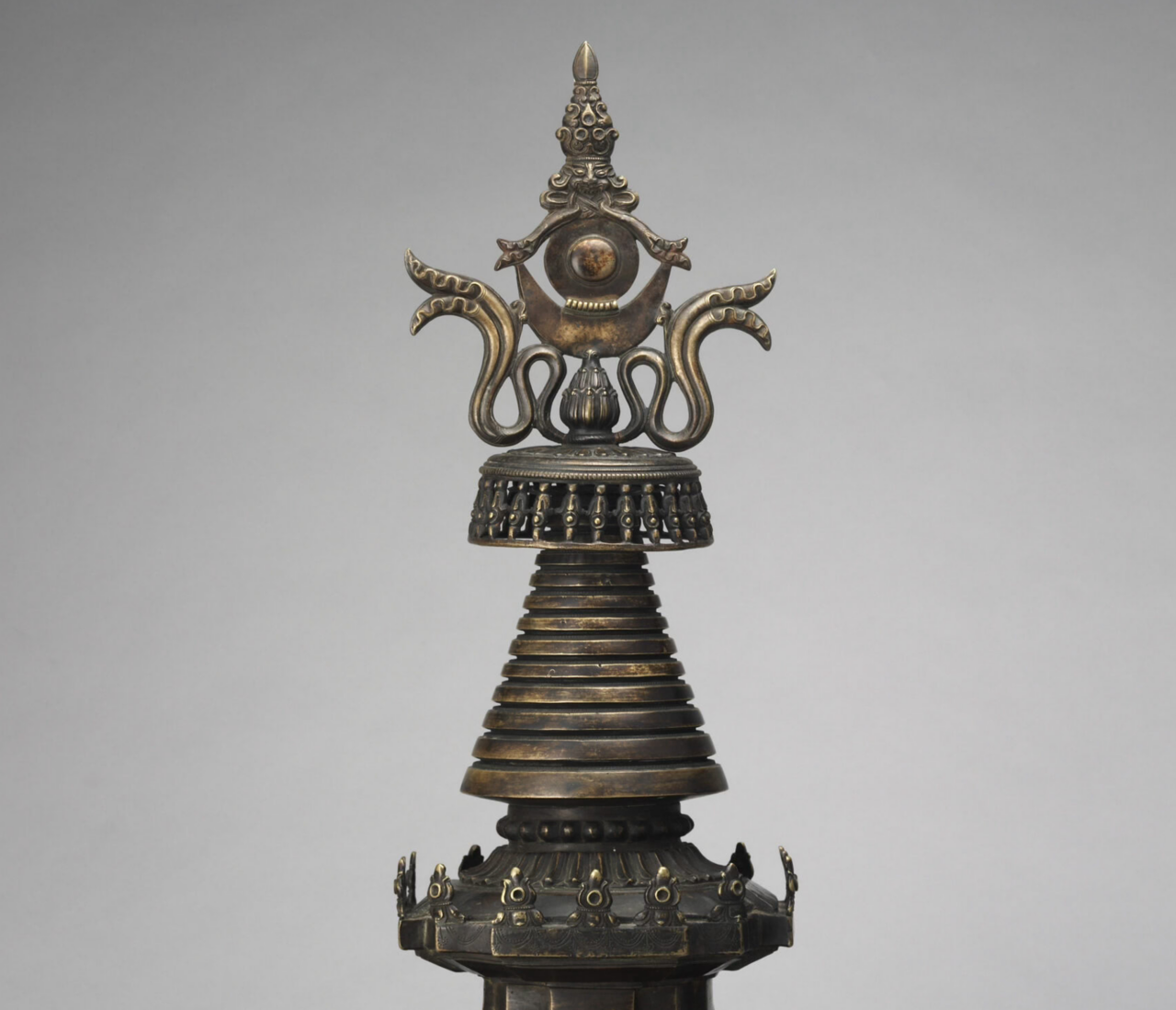
Museum educator Tashi Chodron describes making tsatsas and going on pilgrimage for religious merit.

Fashion designer Buyansan Bayaagalan discusses her personal connection through her grandfather to Buddhist books.

Poet Chime Lama discusses the importance of Tara as a role model for herself and other women.
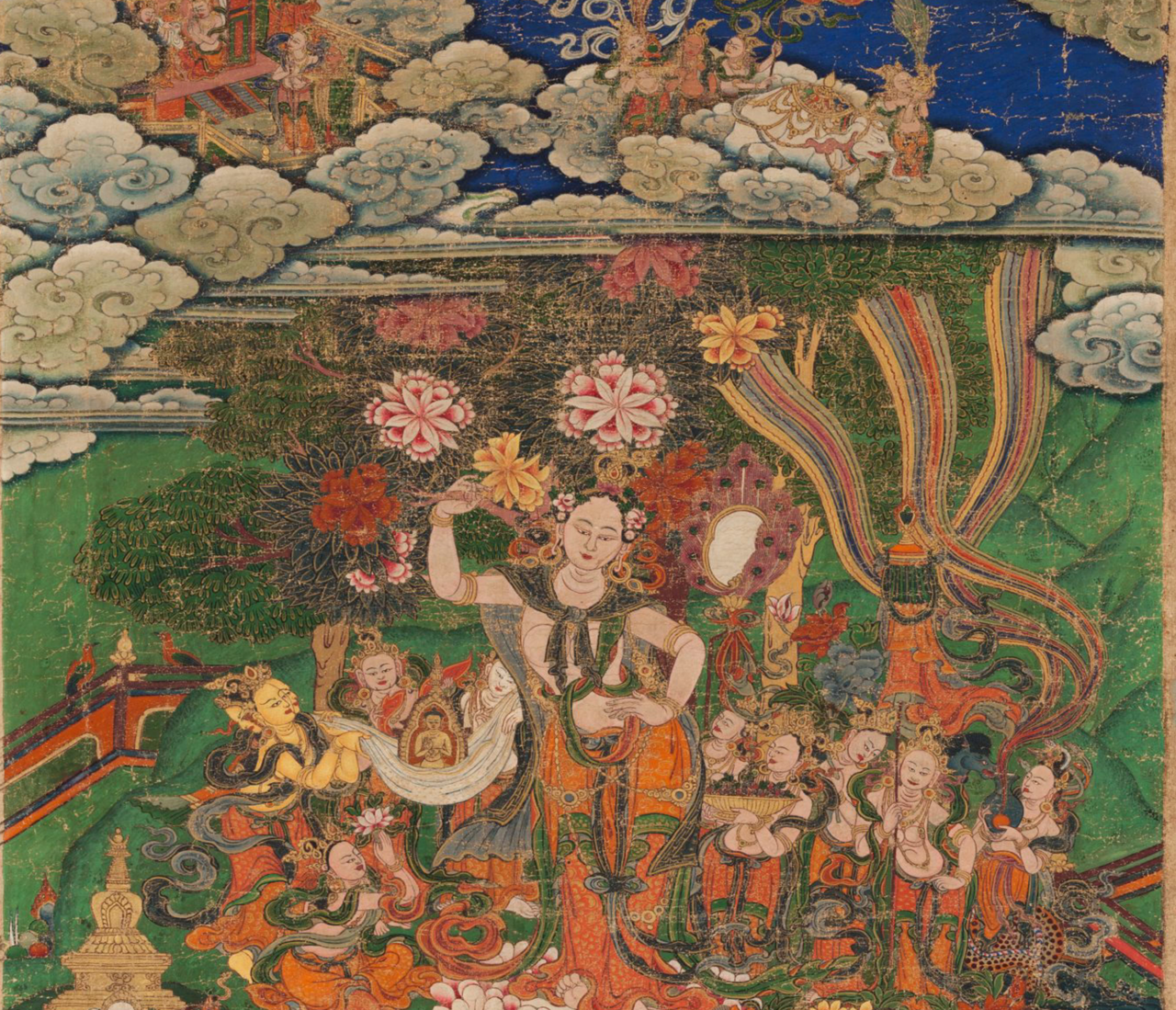
Graduate student Yewong Dongchung talks about the development of Tibetan woodblock printing and its importance in manuscript and illustration production.
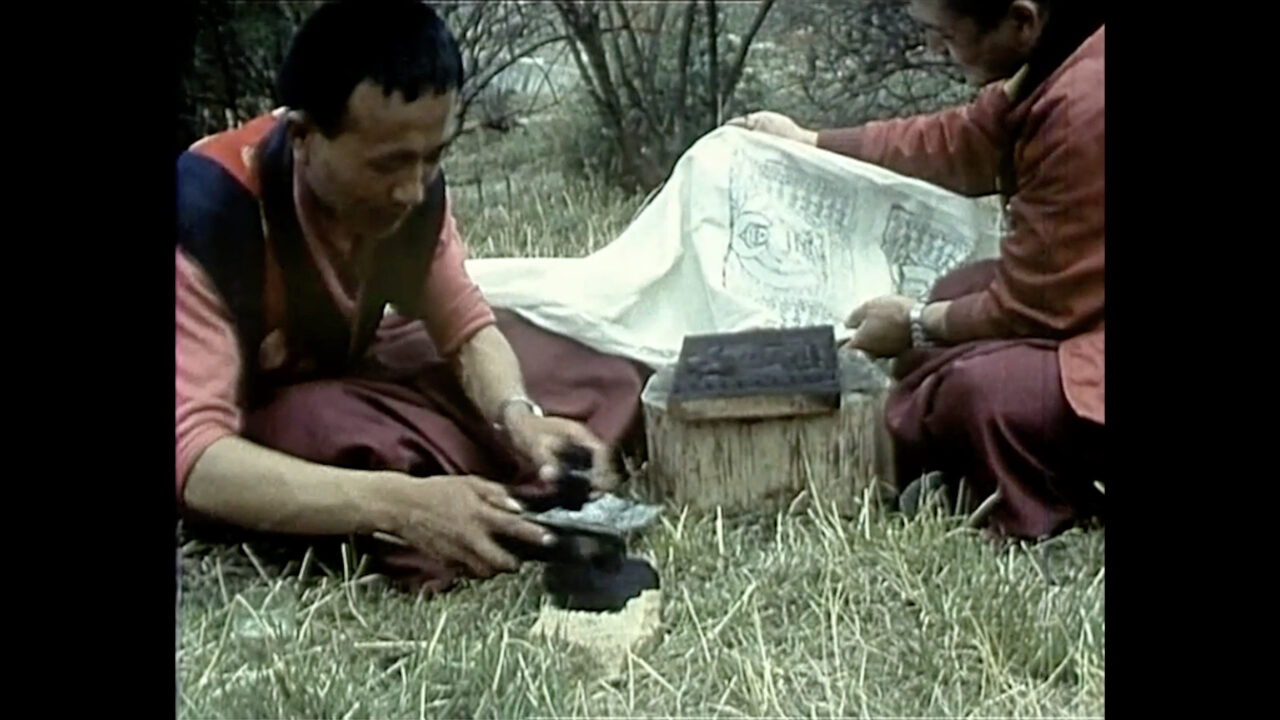
A segment from on prayer flag printing from Art religieux du Bhoutan (Religious Arts of Bhutan)
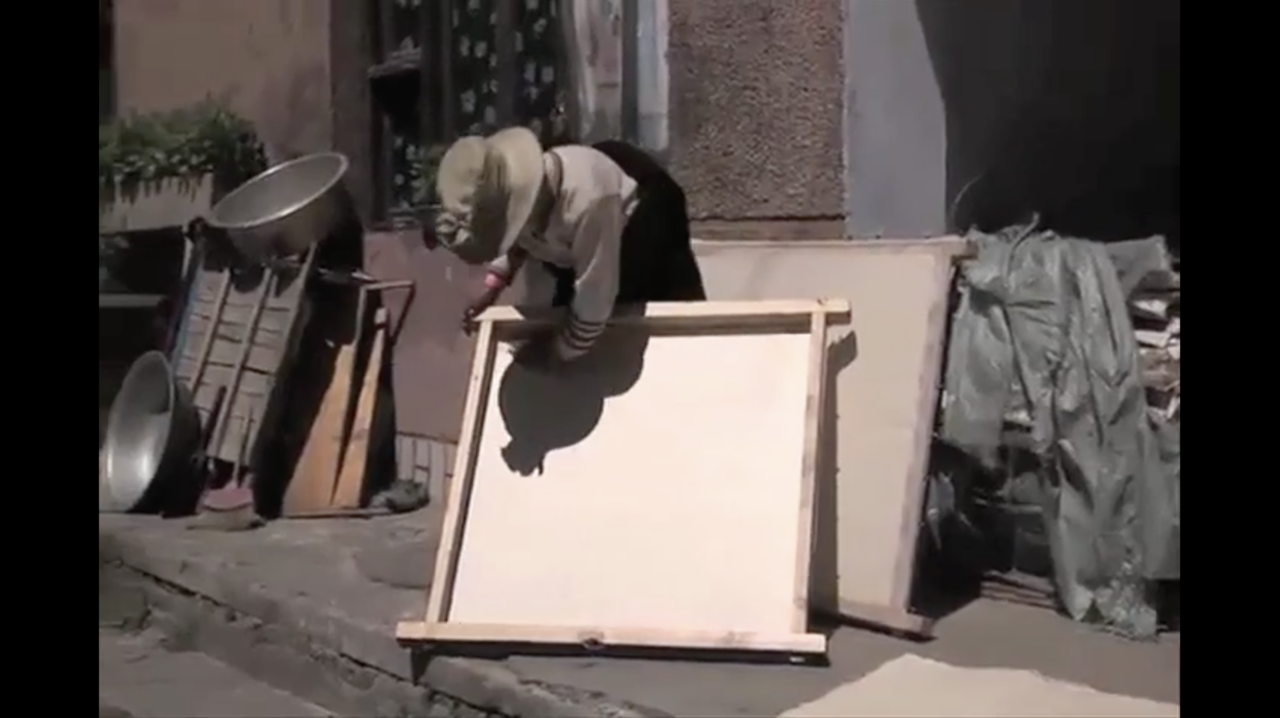
Watch present-day craftspeople make paper at the Degé printing house in Tibet.
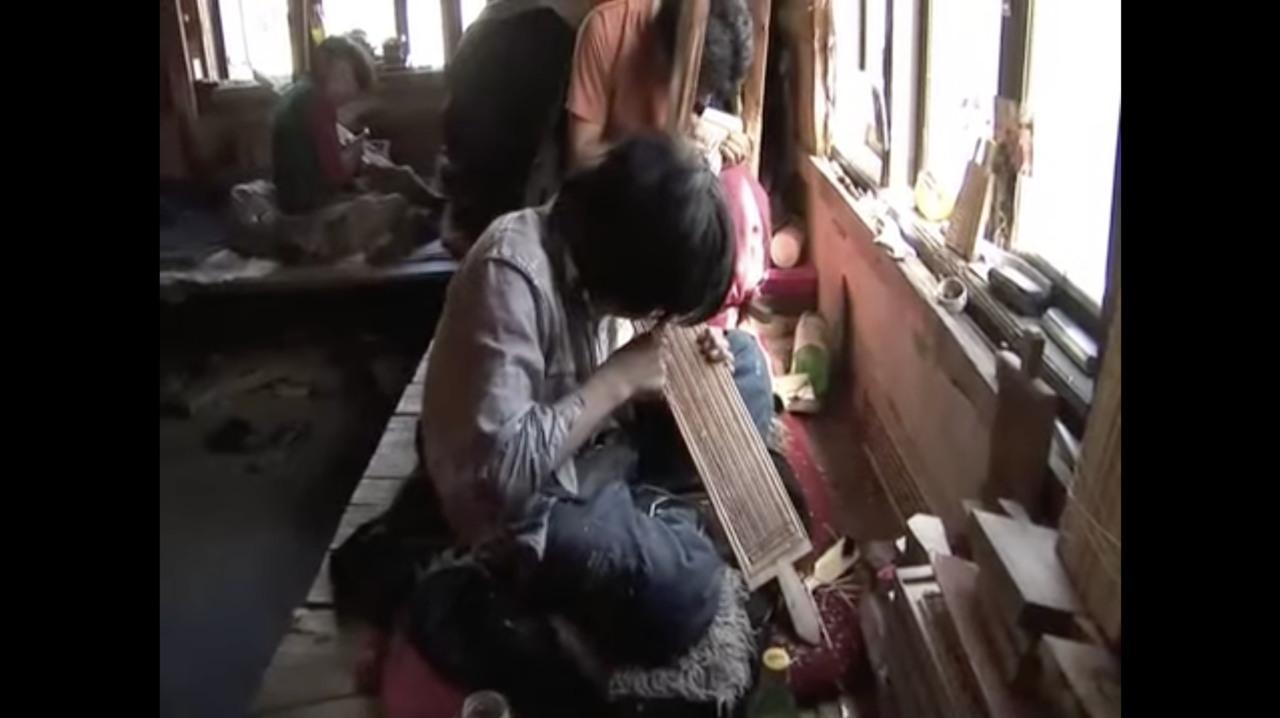
Watch present-day craftspeople make woodblocks at the Degé printing house in Tibet.
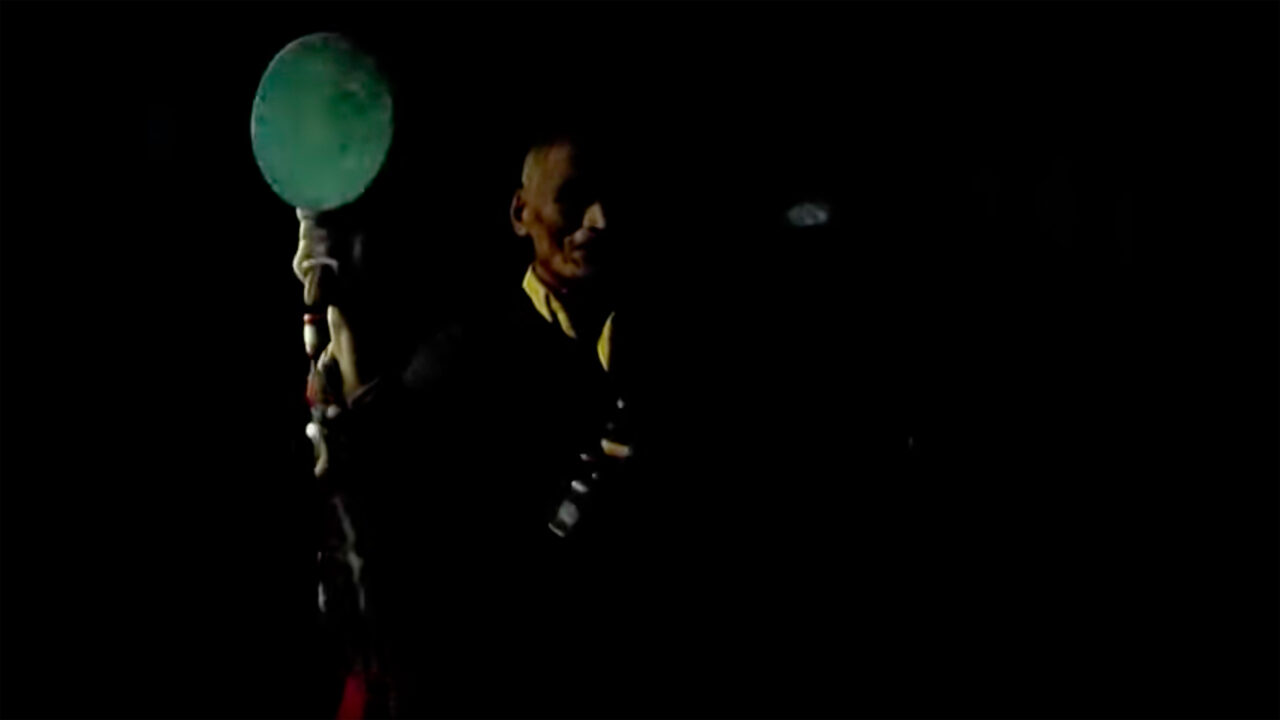
Marie-Noëlle Frei-Pont provides insights into everyday life before the great changes brought about by modernity, digitalisation and the opening up of Bhutan
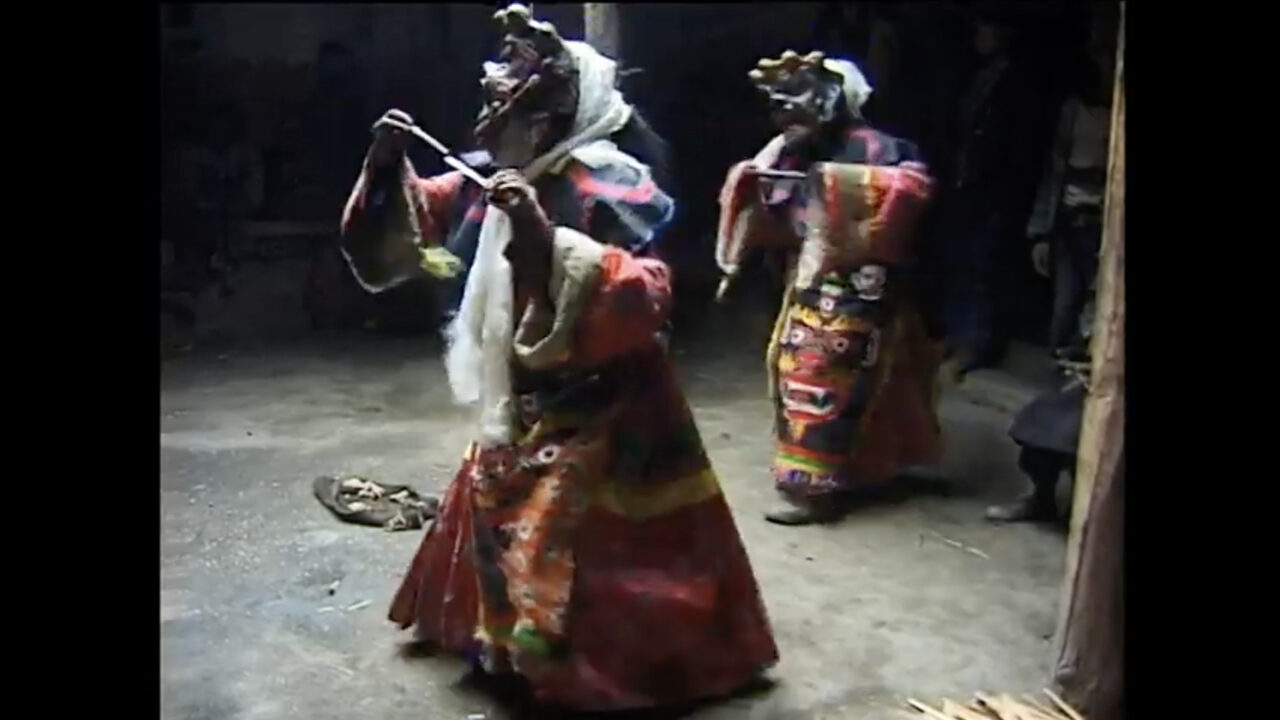
The Dögyab rids the community of its accumulated misfortunes, illnesses and malign presences, through the power of the great tutelary gods and protective divinities of Bon.
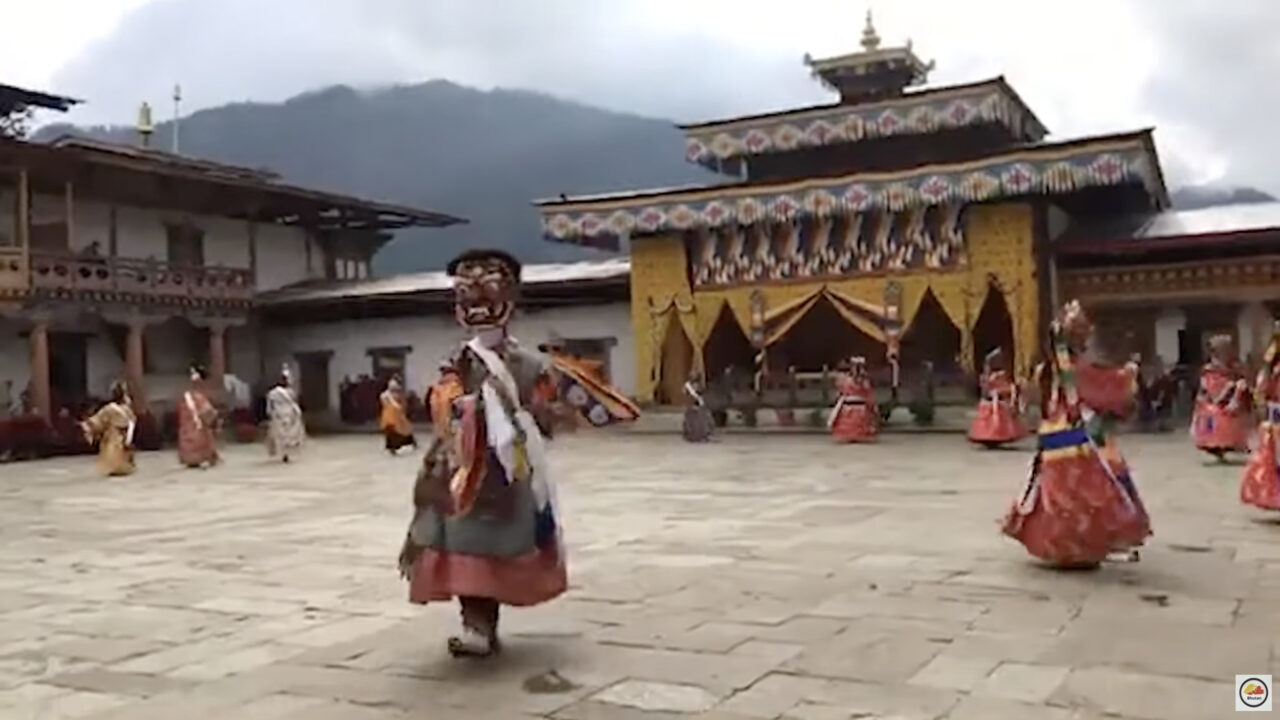
This dance shows the eight different forms that Guru Rinpoche assumed in order to bring all different beings into the Buddhist fold.
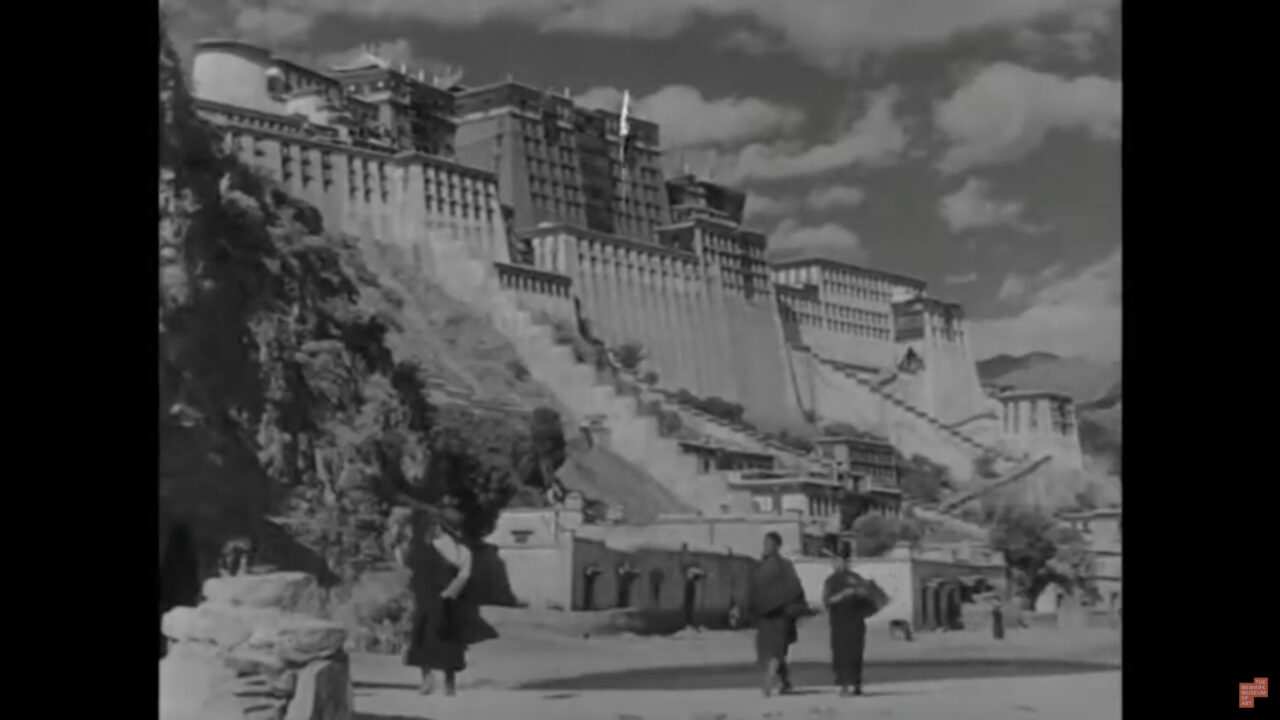
The visual history of modern Tibet is often thought of as the opposition between colonial stereotypes and indigenous visions.
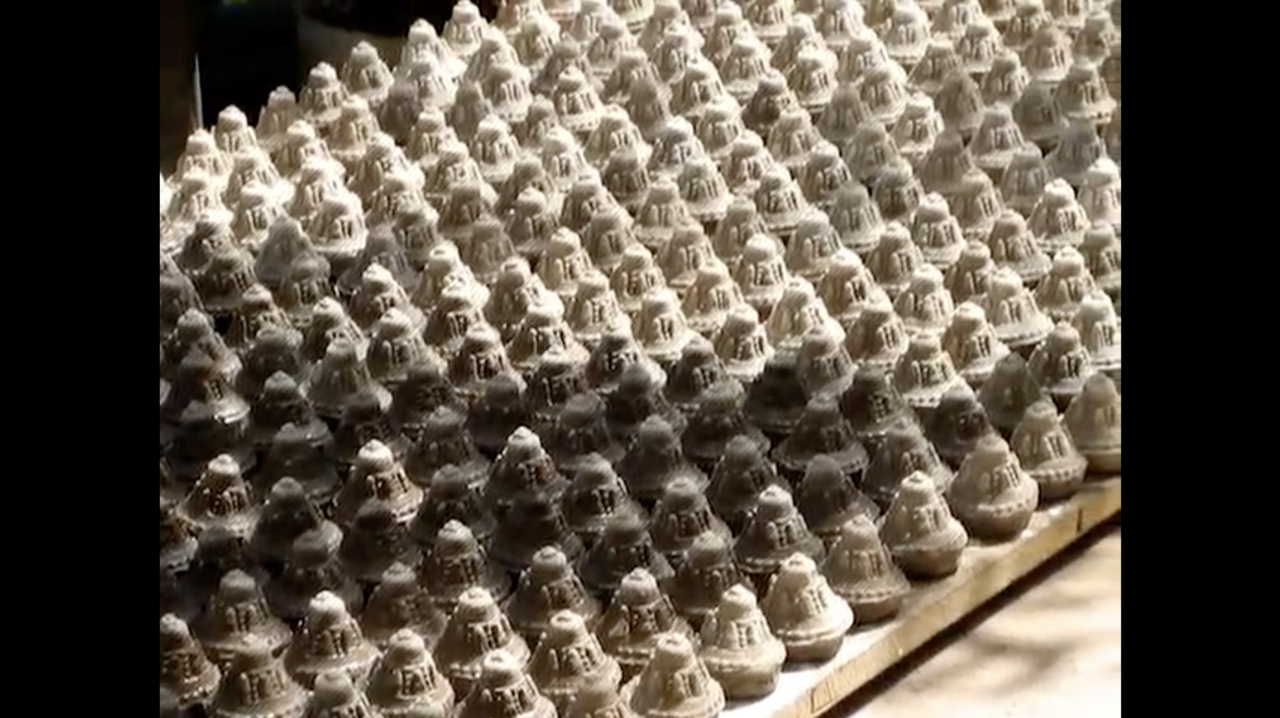
See a type of South Asian votive, known as a tsa tsa, being made from clay near temple sites in the video, Tibetan Buddhist Tsa Tsa and Tibetan Bon-po Tsa Tsa, created for the exhibition.
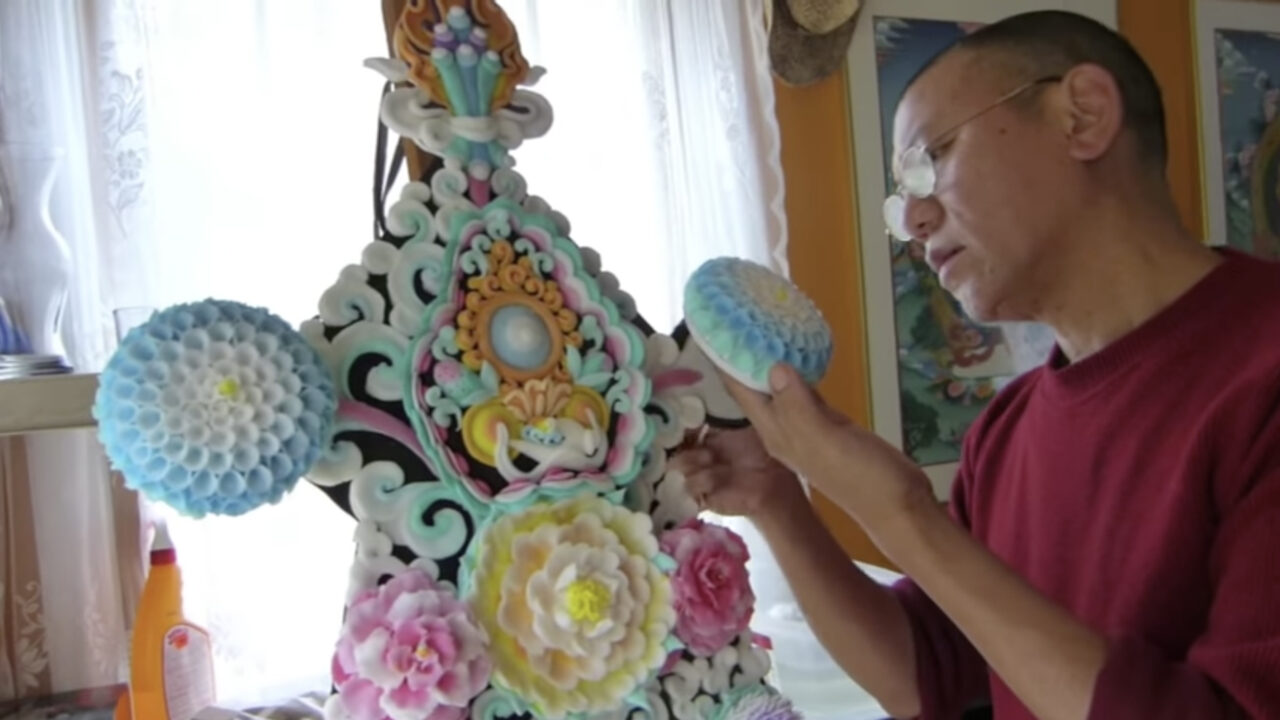
Yeshi Dorjee shows the process of making a Tibetan butter sculpture with his apprentices Jampa Tsondue and Kunga Choekyi
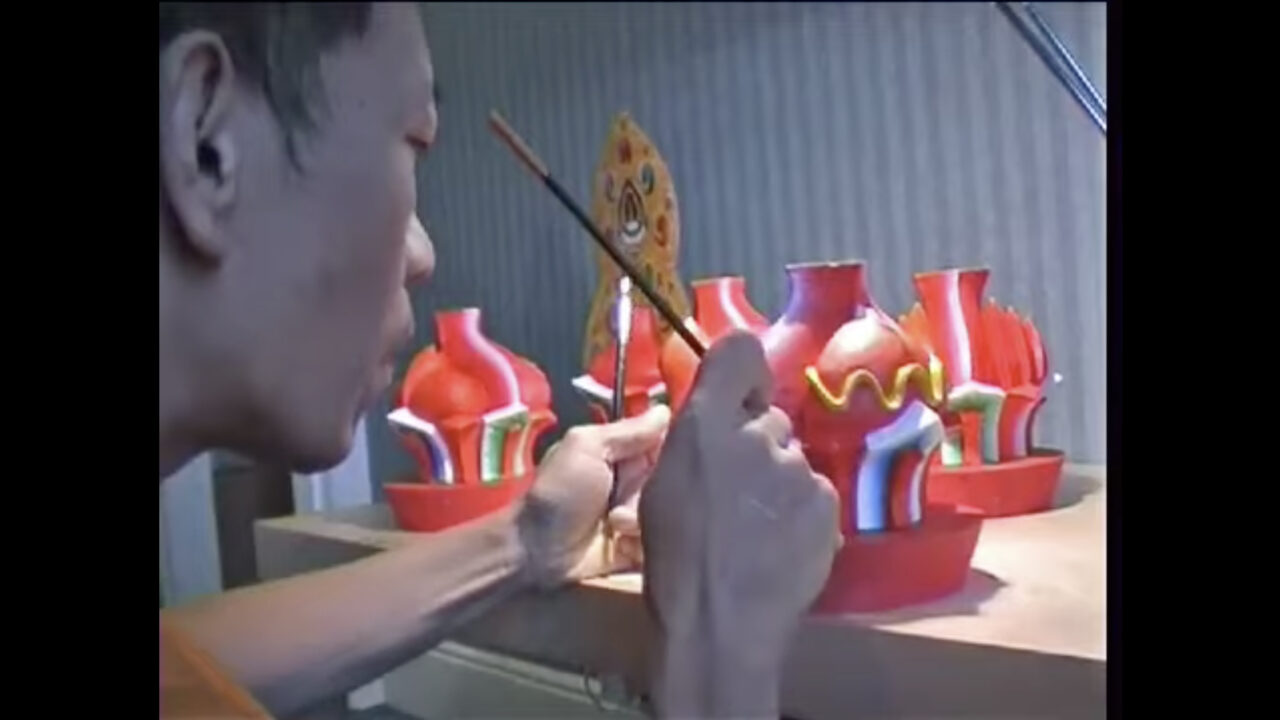
The making of Torma for a Palyul Tibetan Buddhist shrine.
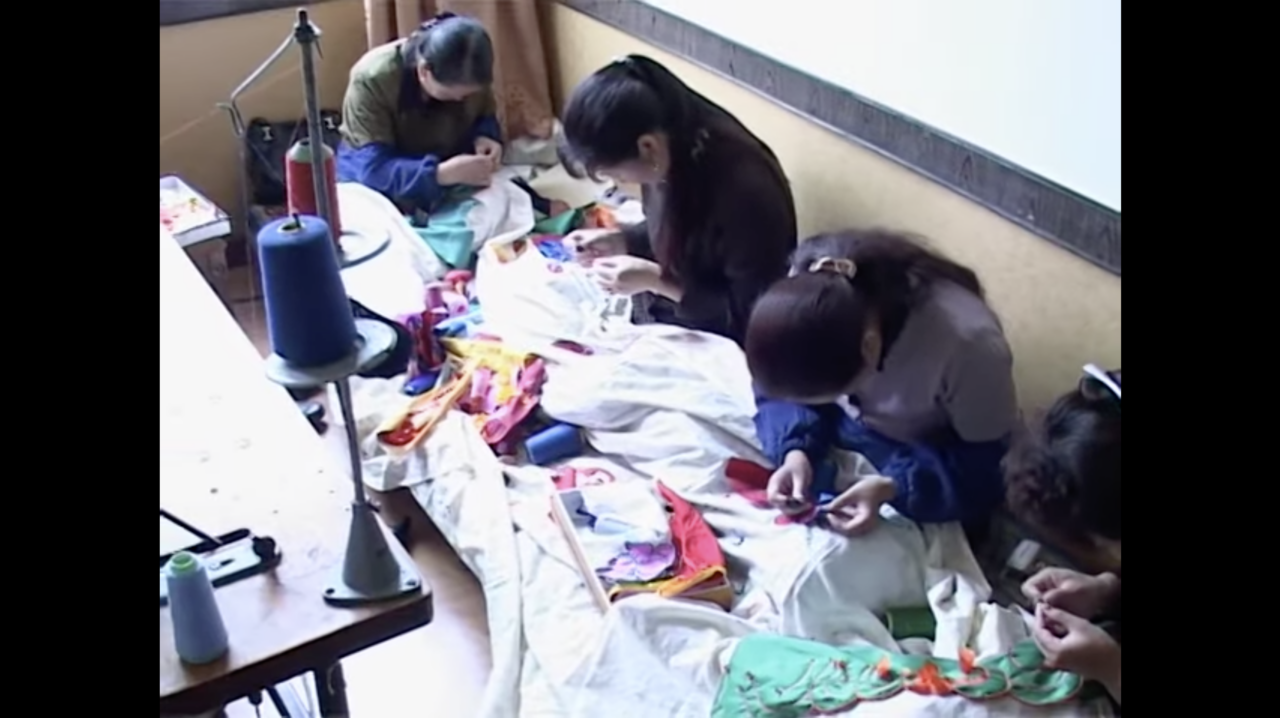
The additive process of appliqué by assembling shaped pieces of cloth allows for the creation of large-scale images several stories tall.
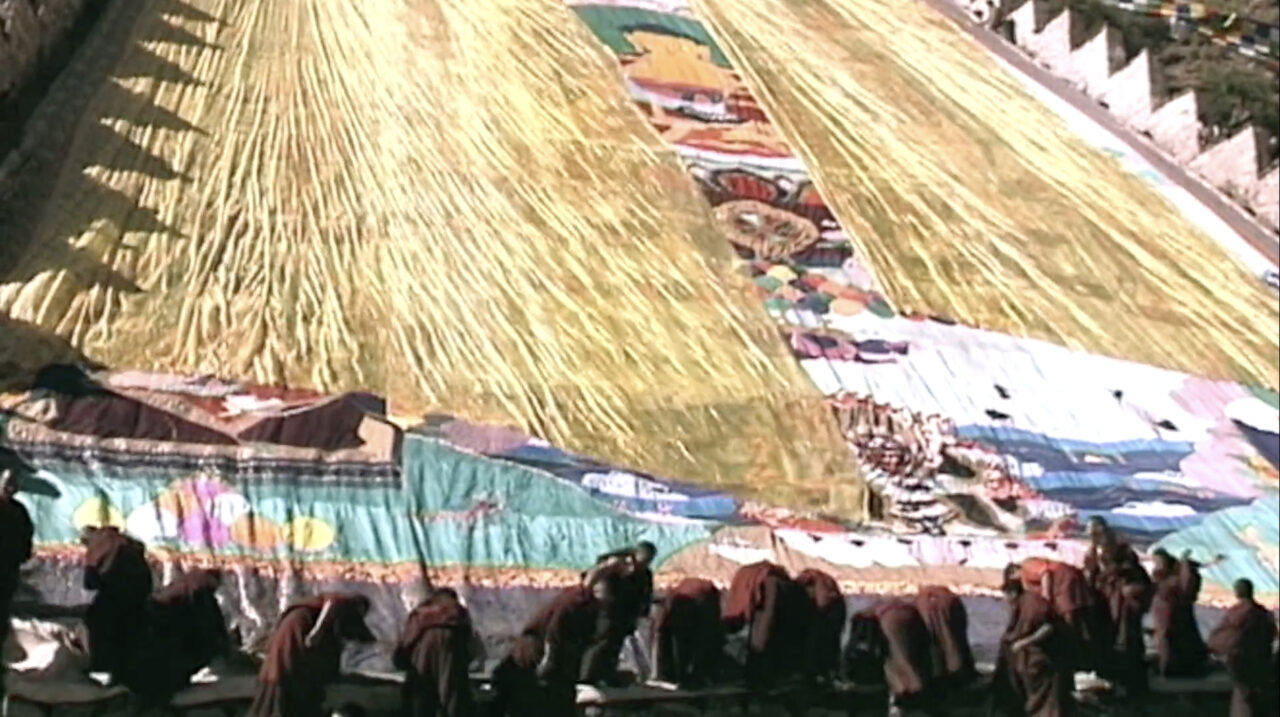
This documentary tells the incredible story of two Westerners working side-by-side with Tibetan seamstresses to reclaim a piece of history.

The Perfection of Wisdom offers a path to enlightenment.
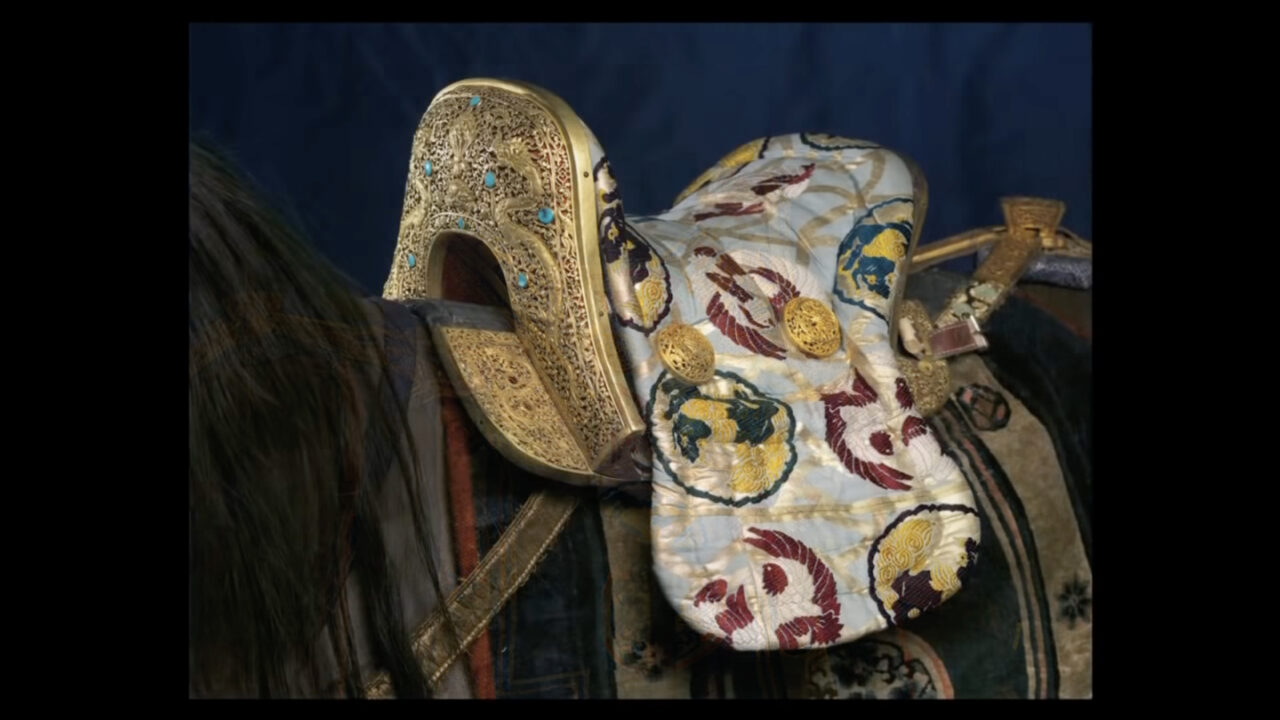
This tradition of highly decorative saddles continues uninterrupted in Tibet for at least a thousand years.
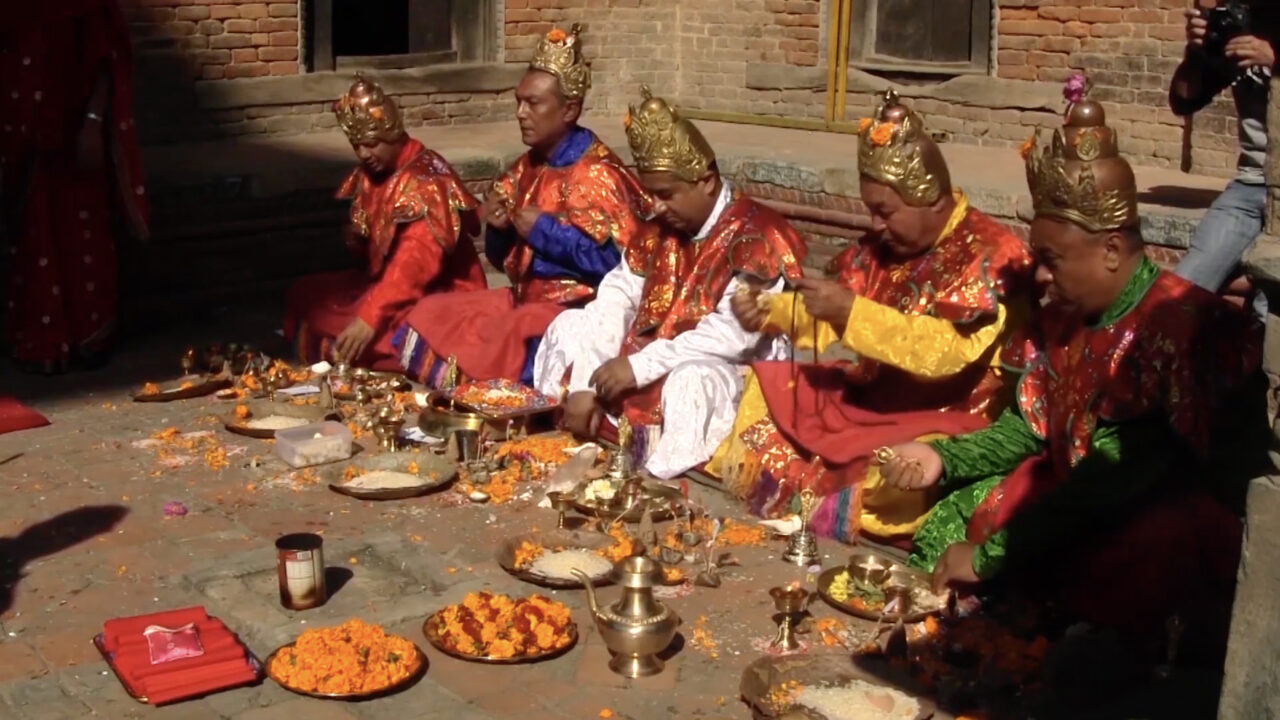
Short video documentary showing Newar vajracarya priests doing a puja.

Cave No.2 at Ajanta is a UNESCO World Heritage Site situated at Aurangabad.
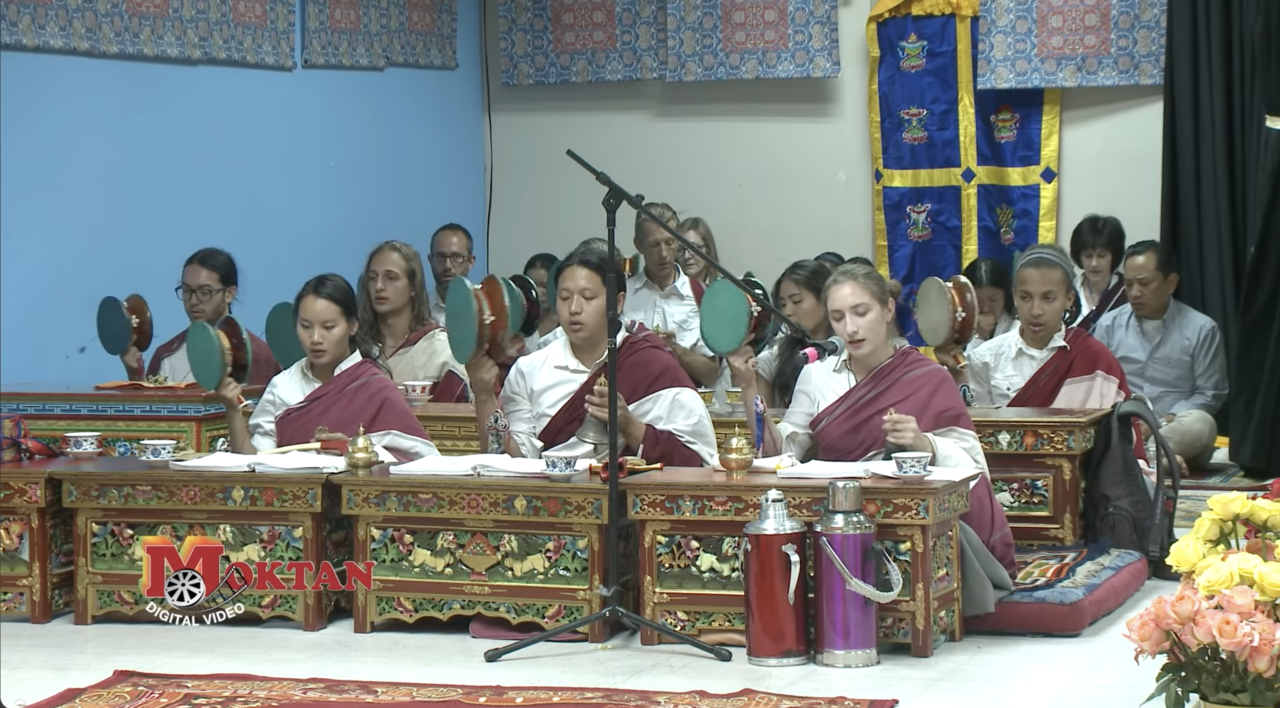
Turning the Great Wheel of Buddha Dharma (chod Practice)
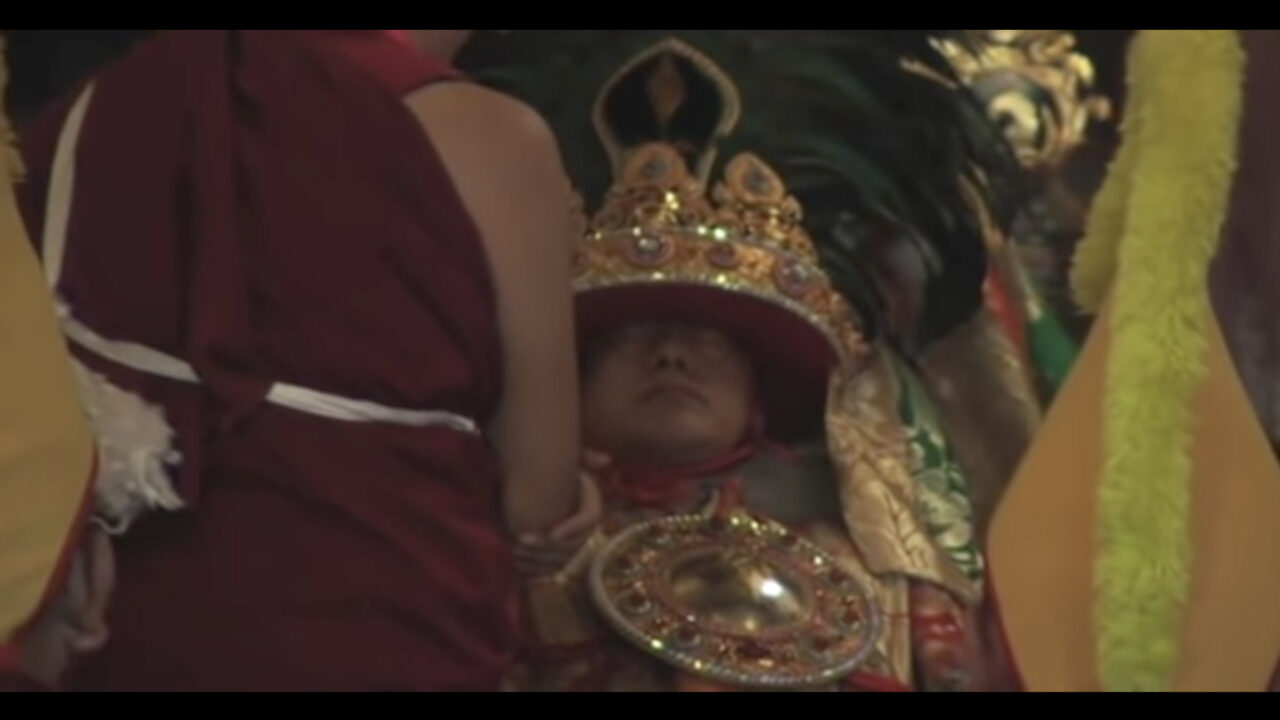
The Nechung Oracle is the State Oracle of Tibet. This video shows the medium in trance state.
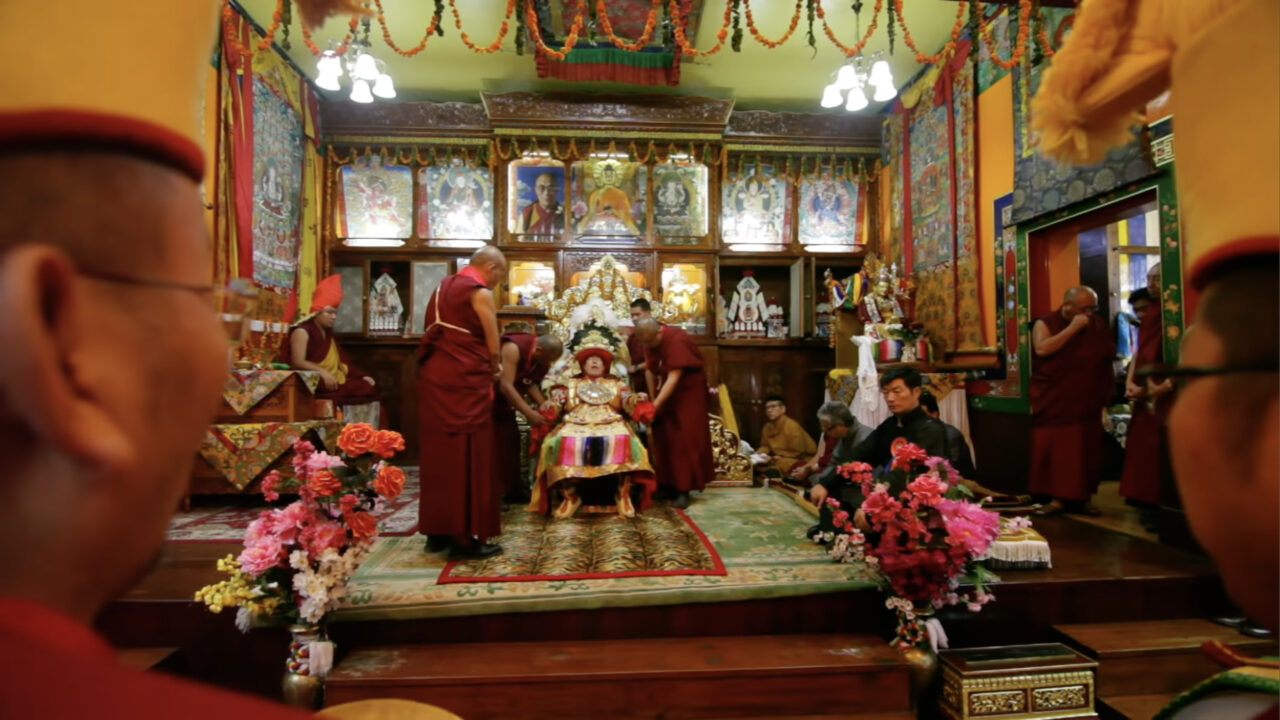
When a human oracle falls into a trance state, the particular possessing deity or related divine emissaries take over.
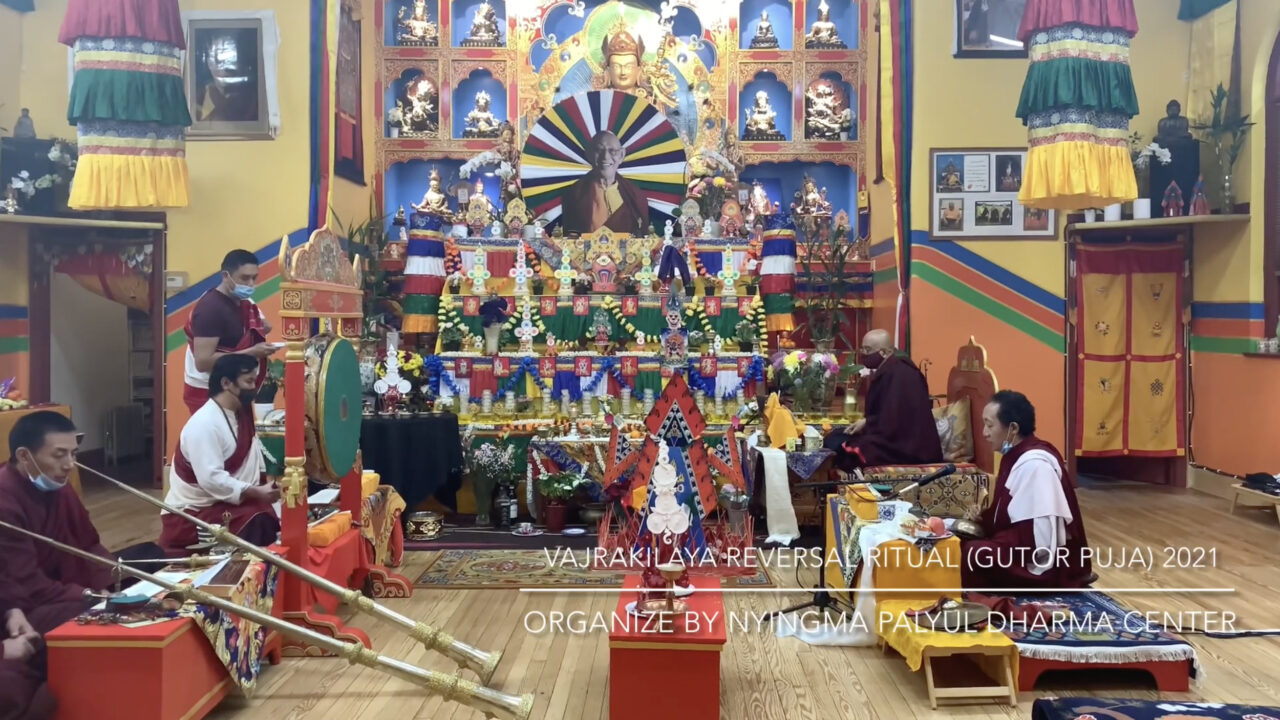
The torgyak (gtor rgyag) ritual is shown in a community procession following a cham dance.
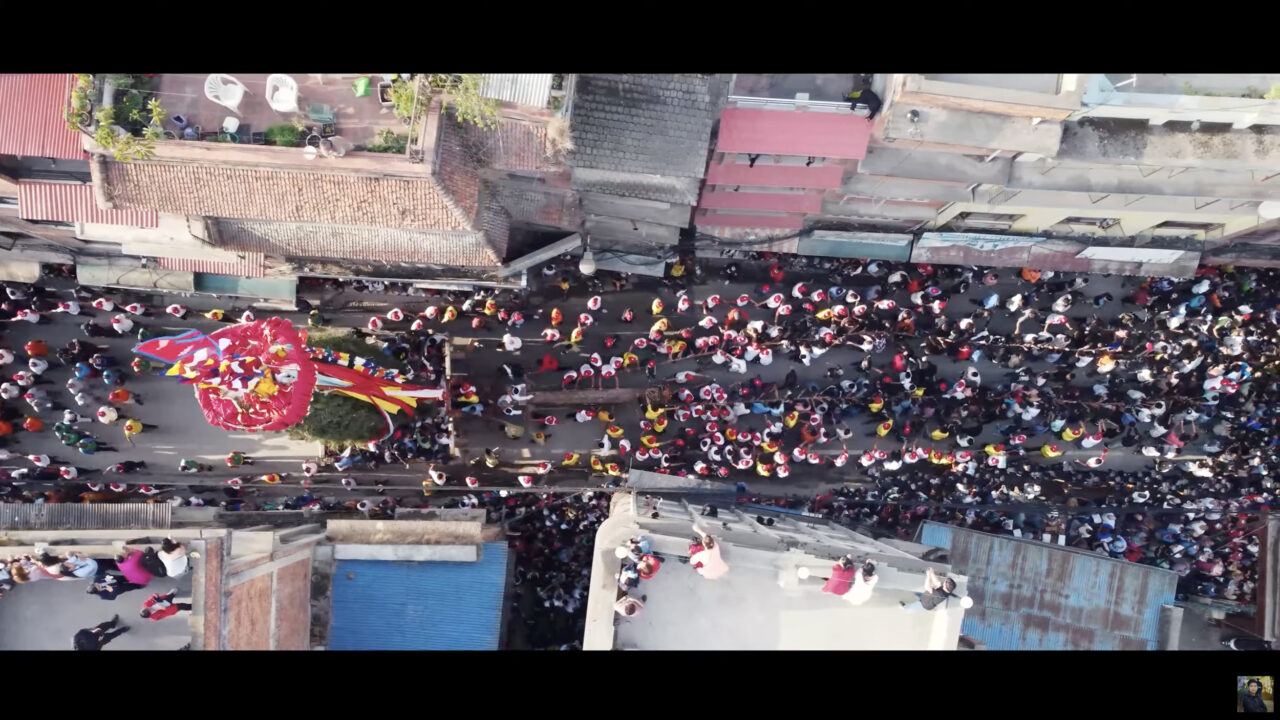
The chariot procession travels through the old city of Patan.
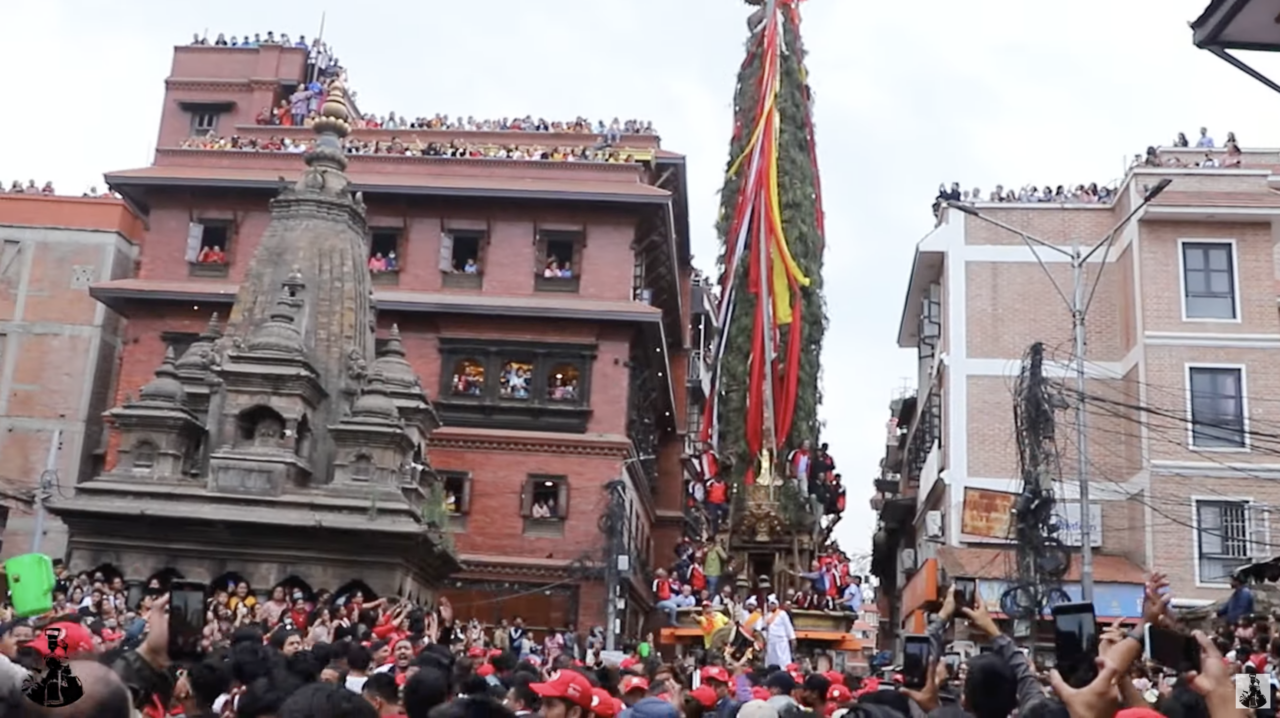
The rath jatra—the pulling of the chariot by a crowd of one hundred or more excited young devotees—is an exciting and somewhat riotous affair.
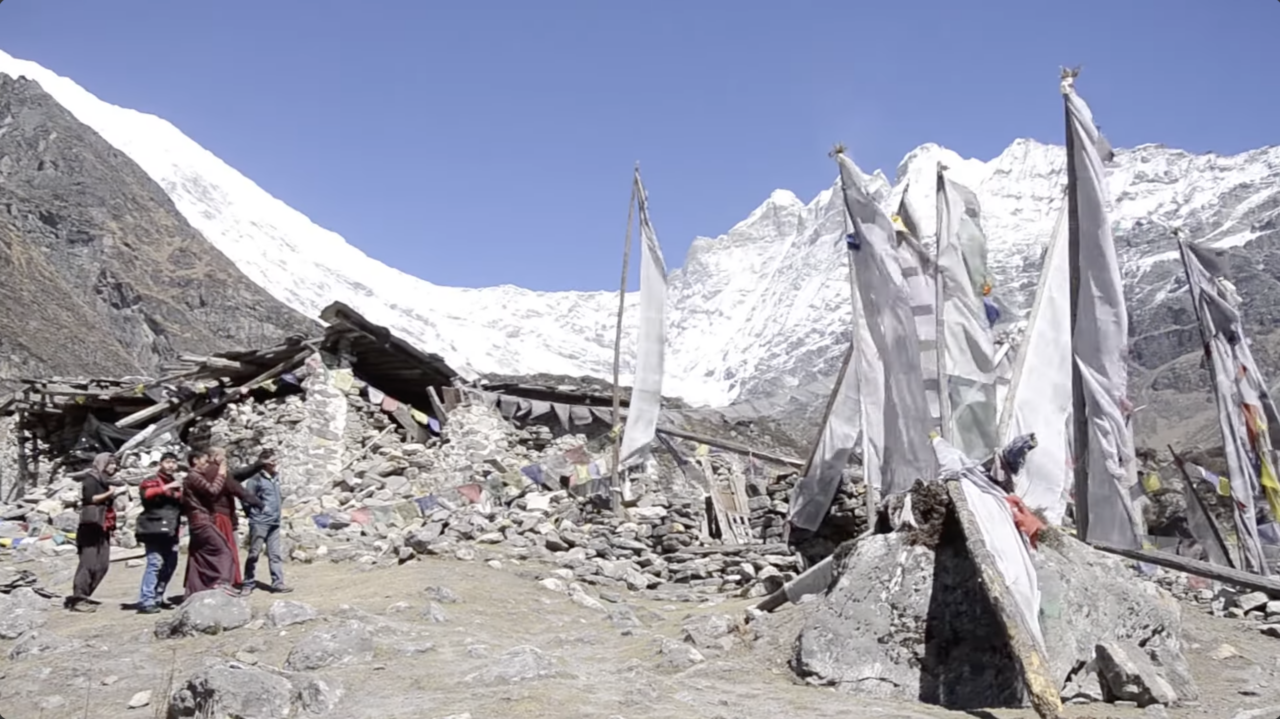
A short film exploring the use of traditional Tibetan medicine as part of reconstruction efforts following Nepal's 2015 earthquake.
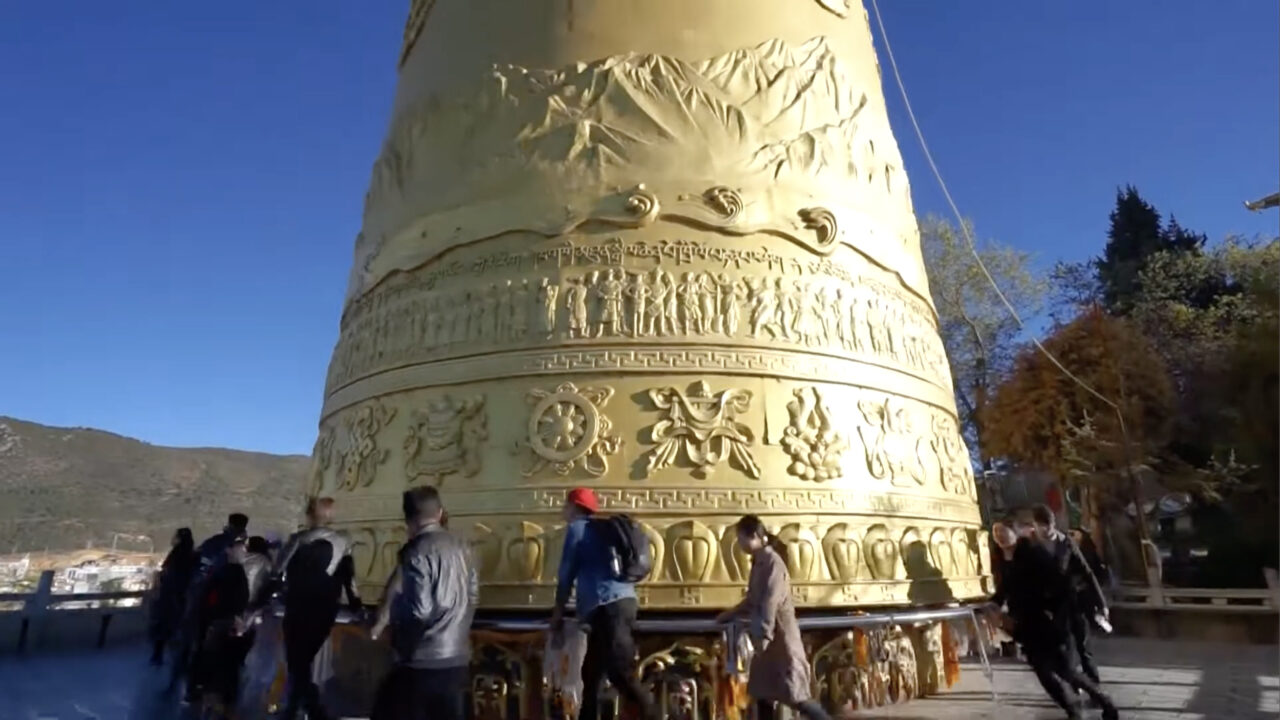
It takes several people working together with effort to rotate monumental prayer wheels, called chokhor.

Elena Pakhoutova describes a Tibetan medical thangka that emphasizes the importance of spring as a season of renewal. Then Dr. Tawni Tidwell reminds us to acknowledge the change of seasons by inviting natural elements into our home environments.
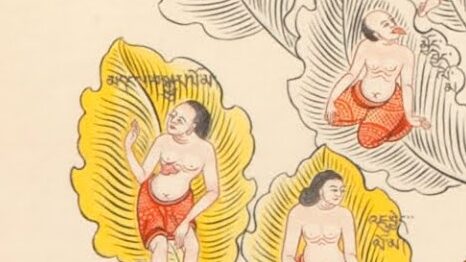
Elena Pakhoutova explores a colorful representation of the tree—or root—of health and illness as it’s understood in the Tibetan medical tradition. Then Dr. Tawni Tidwell teaches us how to fashion a hot compress to enhance feelings of comfort.

Dr. Tawni Tidwell joins Elena Pakhoutova to explore Tibetan medical thankgas in the Rubin Museum collection and offer practices to help bodies in balance during times of distress.
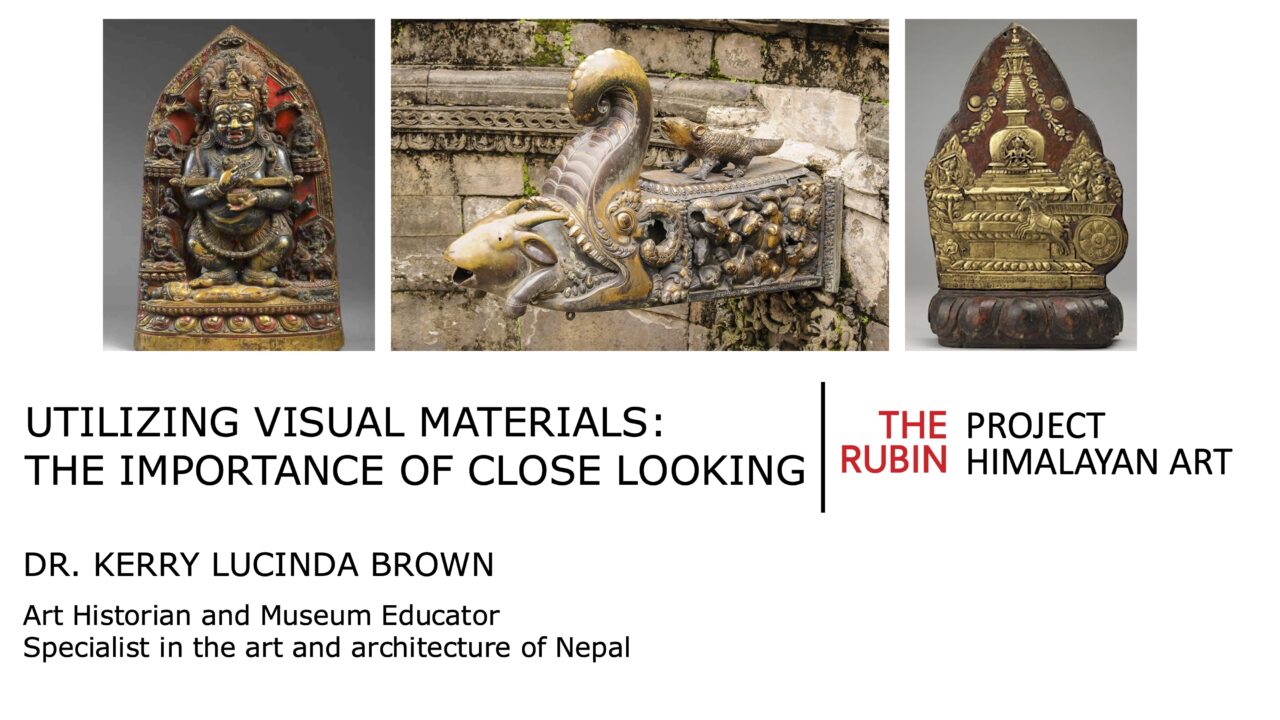
Dr. Kerry Lucinda Brown outlines a guide to expand students’ access to and engagement of objects featured in Project Himalayan Art.



